









FRESH FLORIDA from 2022 | Vol. 8 Discover Florida Agriculture Local Fun U-Pick Farms Let’s Cook Chef-Approved Recipes Meet Your Florida Farmers Learn Ag Conservation CREATE A BUZZ Roadside Wildflowers
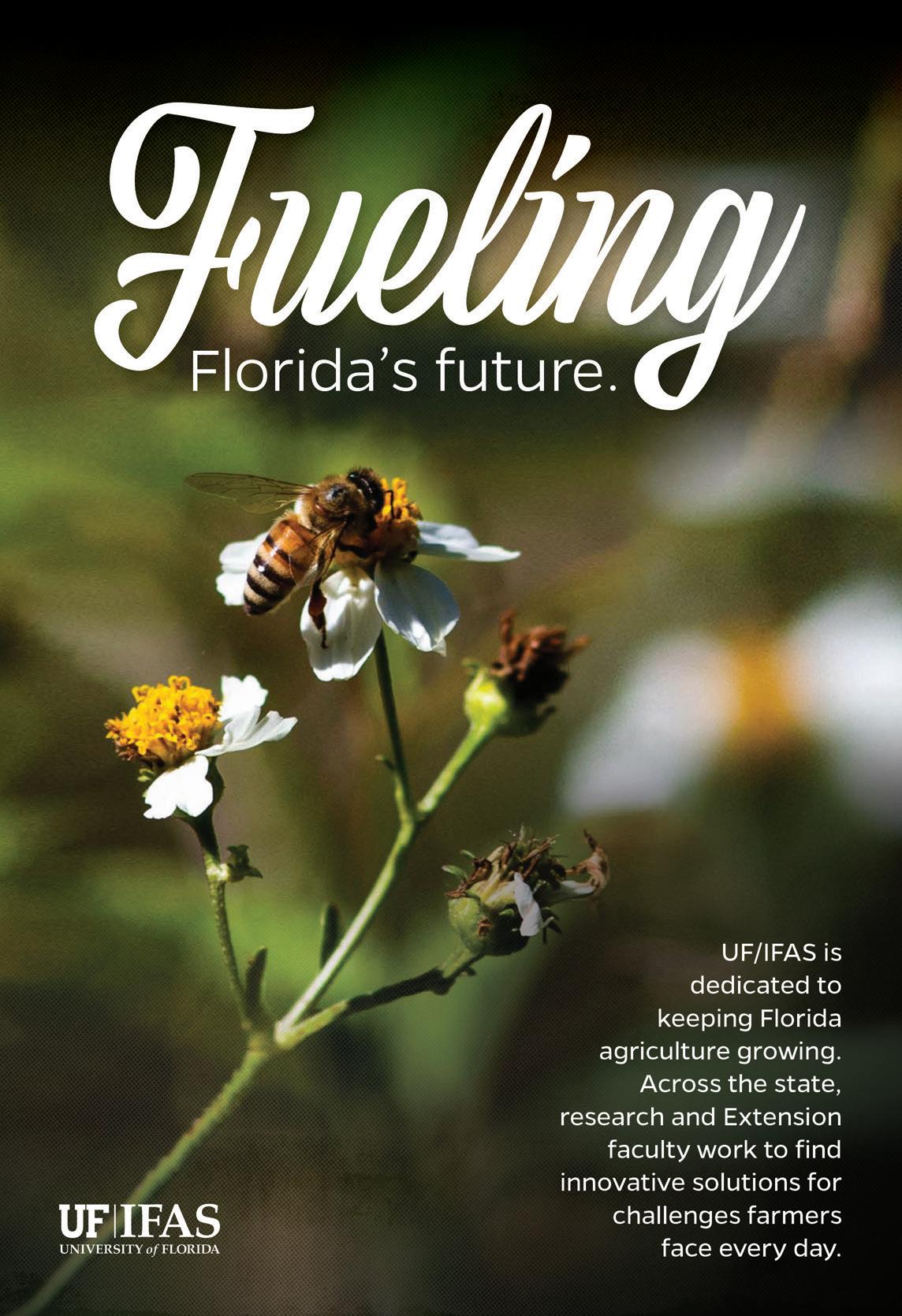


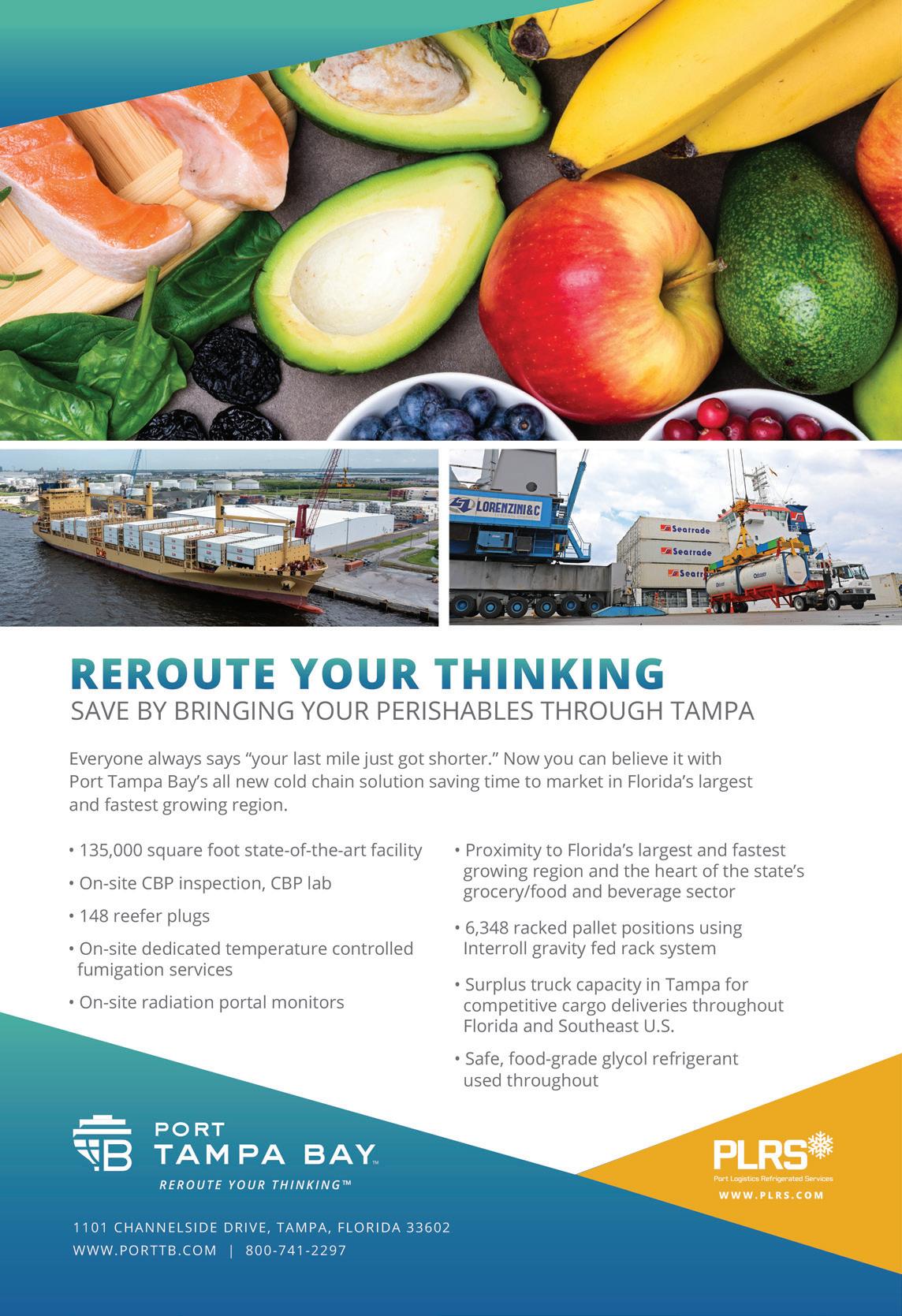

Farmers markets ship Florida commodities across the country




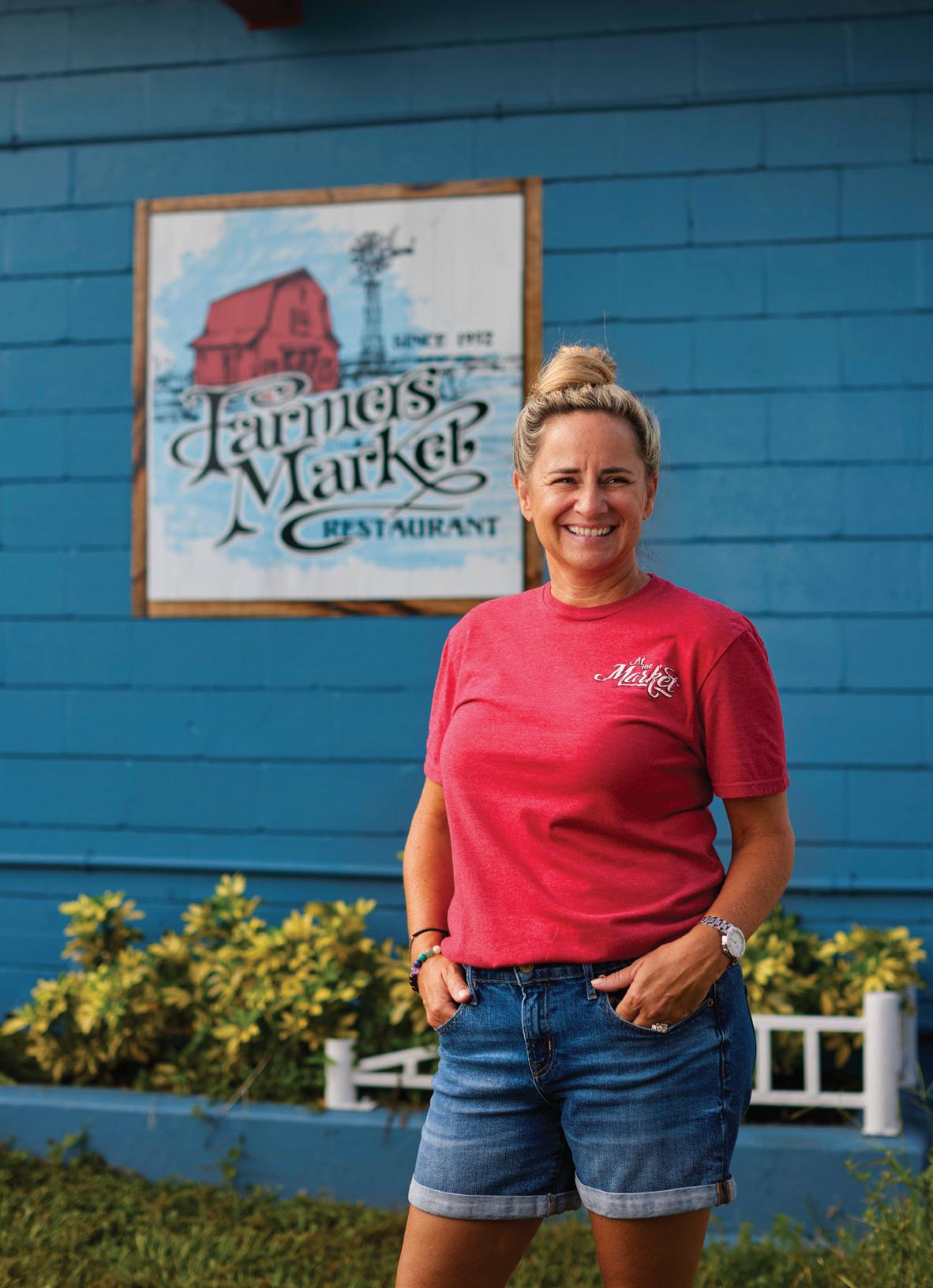
20 Fairs, Festivals and Fun, Oh My!

Upcoming festivals, fairs and events you won’t want to miss 48 Roadside Wildflowers
Managed habitats are essential for bees, butterflies and other pollinators

32 wiTh
FEATURES
loVe, From Florida
FollowFreshFromFlorida.com | 3
PHOTO: BRIAN TIETZ
Create a Buzz
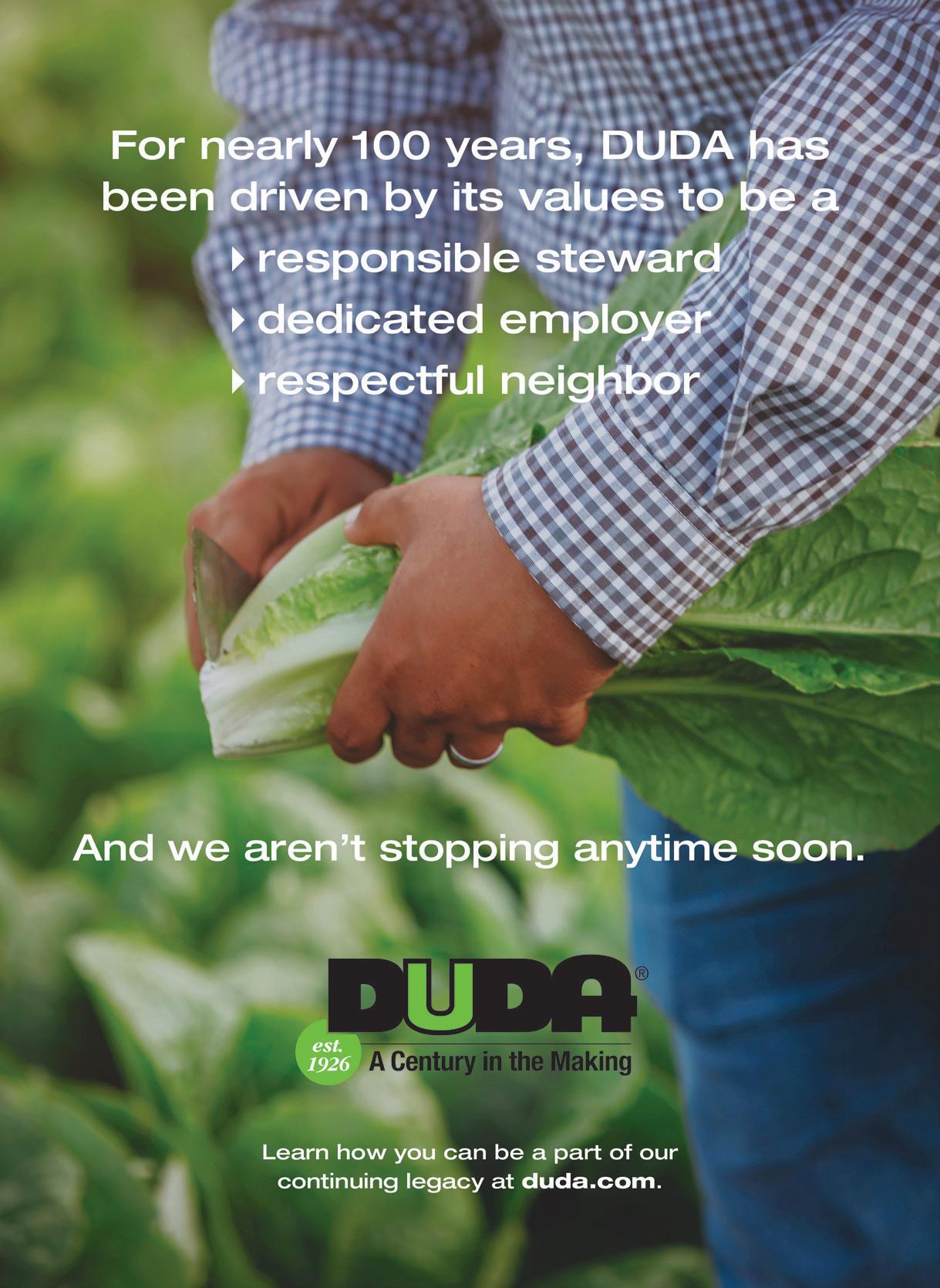
let’s cook
local Fun

Discover Florida agriculture around the state
22 The Science of Food Café and exhibit at Orlando museum connect visitors to farmers
24 Explore Florida’s U-Pick Farms
From produce to flowers, immerse yourself in the agriculture process when U-pick
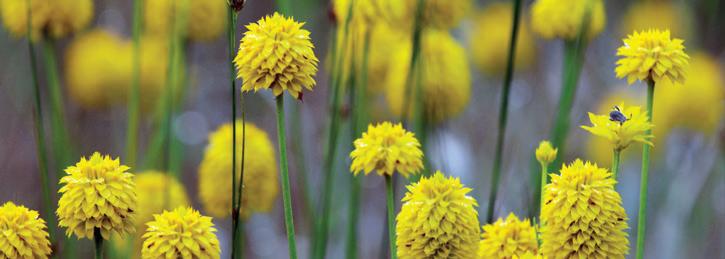
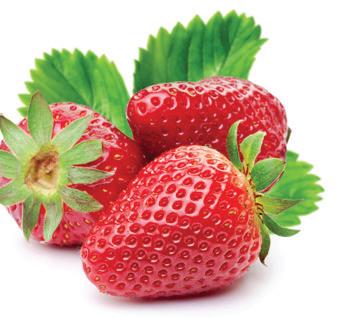
26 A Deep Dive into Tarpon Springs
Community’s sponge industry honors Greek heritage
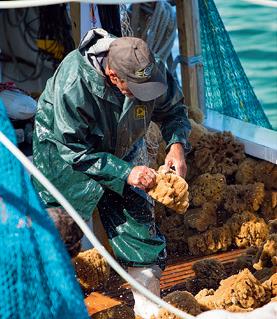
28 Adventure Awaits
State Forests provide natural entertainment
Get to Know Florida’s Farmers
Meet your neighbors –the farmers, ranchers and fishermen who supply food to Floridians and the world
35 Focusing on Florida
Fresh From Florida membership program offers key marketing benefits for ag industry

36 One Size (Doesn’t) Fit All
Large, small or somewhere in between, Florida ag operations take pride in their products
42 Big Shellers
Shellfish connoisseurs are drawn to Cedar Key clams and oysters
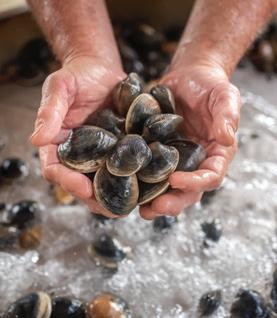
dig deeper
Learn more about Florida agriculture
46 An Extraordinary Environment
Conservation provides a home for endangered species to thrive
51 Ingenuity and Innovation
Industry leaders recognized for their commitment to the environment
53 To FFA and Beyond
Florida FFA helps prepare students for bright futures
54 Soil, Seed, Soul Improving diversity in Florida agriculture
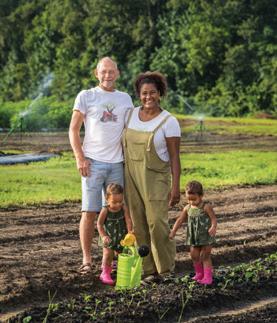
56 Meet the Agronauts
Plant pioneers push exploration boundaries
FollowFreshFromFlorida.com | 5
COMMISSIONER’S LETTER p. 7 / OVERVIEW p. 9
FRESH FROM FLORIDA
Learn more about Florida chefs and local ingredients 12 Love for Local Chef Justin shares culinary inspiration and Florida recipes 15 Some Like It Hot This spicy crop is a local favorite 17 What’s Fresh in Florida? Discover Florida’s freshest commodities all year long PHOTOS, CLOCKWISE FROM TOP LEFT: STEVEN P. WIDOFF; LONG’S PHOTOGRAPHY; JIMMY HO; FLORIDA STATE FAIRGROUNDS; FLORIDA DEPARTMENT OF AGRICULTURE AND CONSUMER SERVICES; ISTOCK.COM/VALENTYNVOLKOV; COVER PHOTO: ISTOCK.COM/CAVAN IMAGES
the Cover Wildflowers planted along Florida roadways benefit bees and other pollinators
On
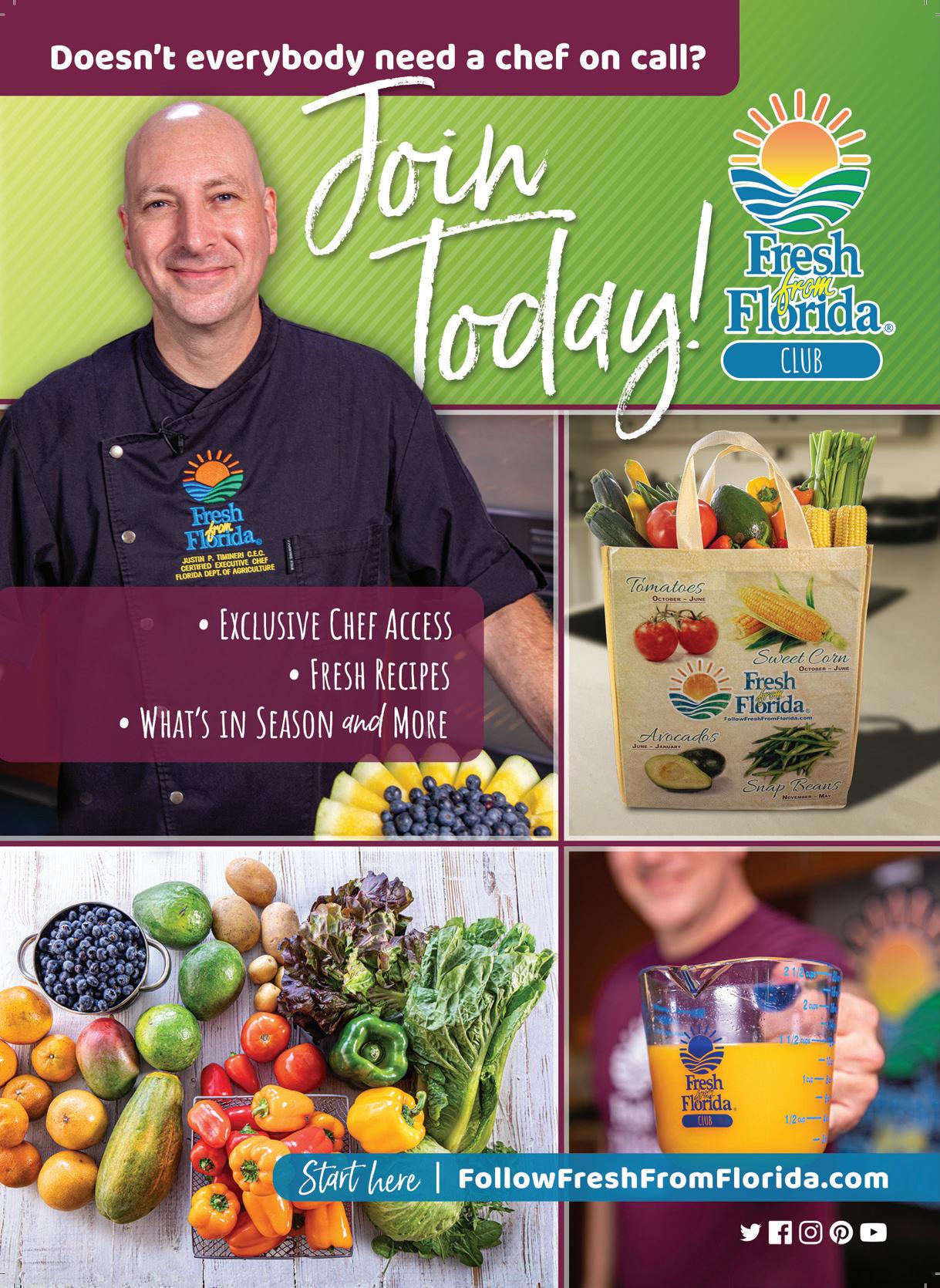
FRESH FLORIDA from
2022 EDITION, VOLUME 8
SENIOR EDITOR Hannah Patterson Hill
ASSOCIATE EDITORS Rachel Graf, Hannah Nave Lewis, Carisa Ownby
CONTRIBUTING WRITERS Amanda Allworth, Barb Baylor Anderson, Yolanda J. Ash, Rachel Bertone, Jessica Walker Boehm, Jodi Helmer, Kim Hill, Christiana Lilly, Keith Loria, Joanie Stiers
V.P./CONTENT & MARKETING Jessy Yancey
V.P./CREATIVE SERVICES Laura Gallagher
ART DIRECTOR Amy Hiemstra
SENIOR GRAPHIC DESIGNERS Bea Herndon, Cynthia Hester, Emmylou Rittenour, Lindsey Tallent
GRAPHIC DESIGNER Eliza Hawkins
PHOTO DIRECTOR Alison Hunter
SENIOR PHOTOGRAPHER Jeff Adkins
STAFF PHOTOGRAPHER Nathan Lambrecht
PHOTO ASSISTANT Jess Spence
V.P./DIGITAL STRATEGY Richard Stevens
PRESIDENT Ray Langen
CHIEF OPERATING OFFICER Kim Newsom Holmberg
EXECUTIVE VICE PRESIDENT Jordan Moore
V.P./BUSINESS DEVELOPMENT Drew Colston
V.P./ADVERTISING SALES Herb Harper
V.P./OPERATIONS Molly Morton
V.P./CLIENT SERVICES Katie Middendorf
SENIOR AD COORDINATOR/DESIGNER Vikki Williams
AD TRAFFIC COORDINATOR Patricia Moisan
SALES OPERATIONS SPECIALIST Courtney Snell
FARM FLAVOR MEDIA IS A DIVISION OF JOURNAL COMMUNICATIONS INC.

CHAIRMAN Greg Thurman
PRESIDENT/PUBLISHER Bob Schwartzman
CONTROLLER Chris Dudley
ACCOUNTING TEAM Maria McFarland, Lisa Owens
DATABASE DIRECTOR Debbie Woksa
EXECUTIVE SECRETARY Kristy Giles
HUMAN RESOURCES MANAGER Peggy Blake
Fresh From Florida is published annually by Farm Flavor Media and distributed by the Florida Department of Agriculture and Consumer Services.
For advertising information or to direct questions or comments about the magazine, please contact Farm Flavor Media at (615) 850-0309 or info@farmflavormedia.com.
F LORI d A d EPARTMENT OF AGRICULTURE
AN
d CONSUMER SERVICES
COMMISSIONER Nicole “Nikki” Fried
Special thanks to all Department staff for their support.
For more information about the Florida Department of Agriculture and Consumer Services, visit FDACS.gov or call (850) 617-7300.
No public funds were used in the publishing of this magazine.
© Copyright 2021 Journal Communications Inc., 6550 Carothers Parkway, Suite 420, Franklin, TN 37067 (615) 771-0080. All rights reserved. No portion of this magazine may be reproduced in whole or in part without written consent.
Please recycle this magazine.
it’s been quite a year for Florida agriculture, with a global pandemic presenting unprecedented challenges for our state’s farmers, ranchers and fishermen. a s Florida’s 12th commissioner of a griculture, it’s my honor to stand beside and fight for the 2.4 million Floridians working to produce the safe, domestic food supply on which 150 million a mericans rely.
in the past year, the Florida department of a griculture and consumer services has worked with the Usda and congress to secure billions in support for agriculture producers, from the coronavirus Food a ssistance Program to aid for specialty crops, dairy, livestock and more. a s coV id -19 isn’t yet in the rearview mirror, we will continue to advocate for state and federal resources for our hardworking producers.
Nicole “Nikki” Fried
we’re proud to share that Florida’s hemp industry has taken off, with an estimated $370 million in economic impact. additionally, the department’s Florida Farm to You commodities exchange website directly linking Florida producers with buyers seeking Florida products has been a major success and was recently relaunched.
in this issue of Fresh From Florida , we feature Florida producers implementing sustainable practices. From cedar Key aquaculture operations to vegetable farms across the state, Florida’s farmers, ranchers and fishermen deserve recognition for their dedicated stewardship and commitment to conservation.
No matter the challenges, Florida’s agriculture producers can be counted on to meet local, national and global demand – and our state’s producers can count on the Florida department of a griculture and consumer services to be by their side every step of the way. Thanks for reading and for helping us #KeepFloridaGrowing!
sincerely,
Nicole “Nikki” Fried commissioner of a griculture Florida department of a griculture and consumer services
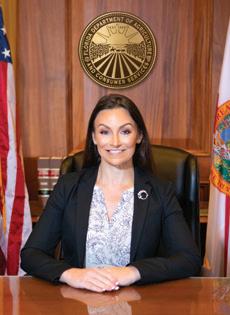
FollowFreshFromFlorida.com | 7
#KeepFloridaGrowing
Florida Commissioner of Agriculture
WELCOME
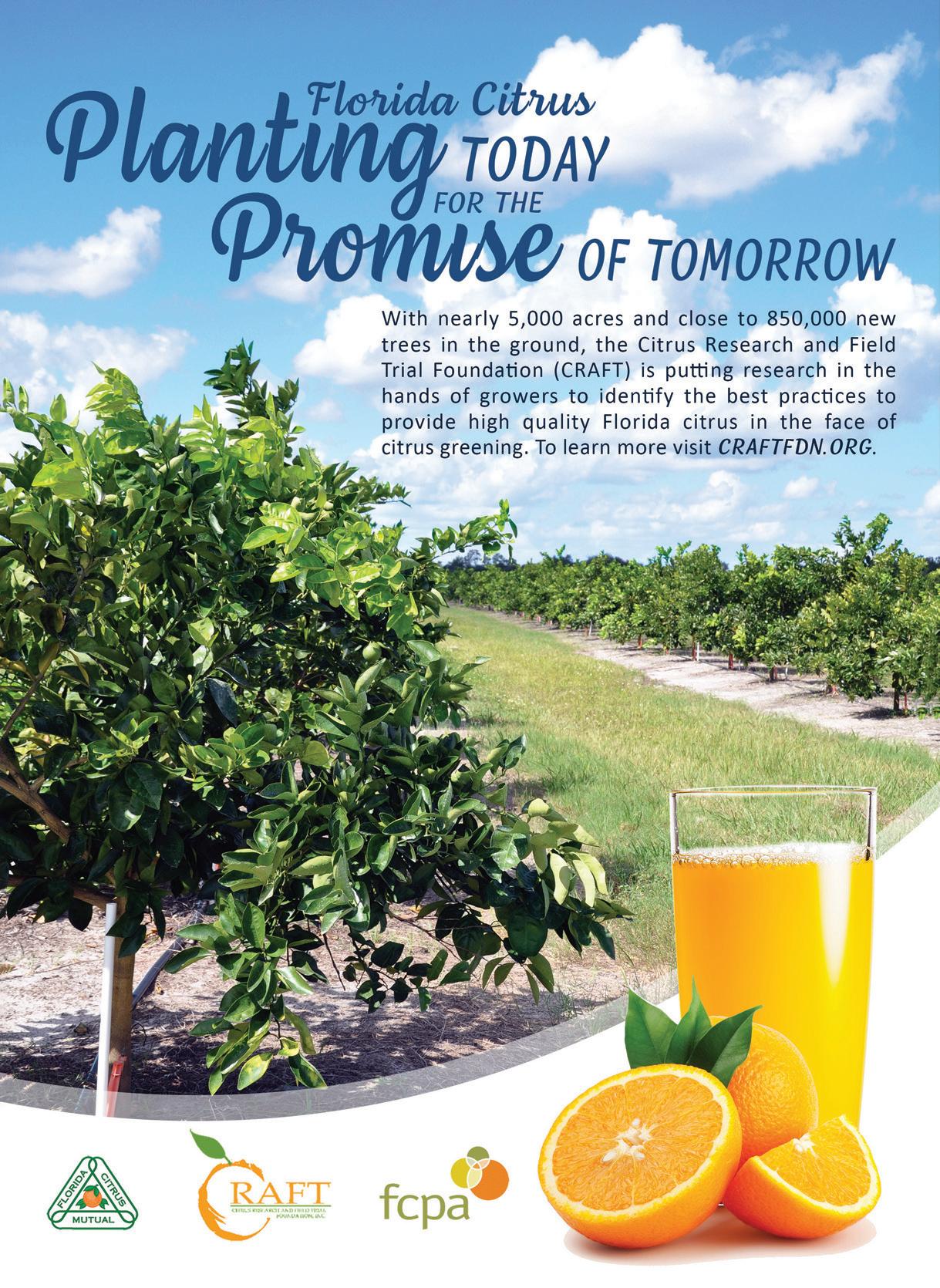
Florida Agriculture Quick Facts

FLORIDA IS HOME TO 47,500 AG OPERATIONS, RUN BY SOME OF THE FINEST
farmers and ranchers around. spanning an impressive 9.7 million acres, the farms and ranches provide the state with substantial economic stability. with a climate ideal for growing a wide variety of produce and raising livestock, Florida produces more than 300 commodities.

300+ COMMODITIES
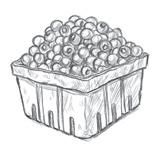



Agriculture and agribusiness contribute nearly $150 BILLION to the state’s economy.

In 2020, Florida ranked first in the United States in production value of:





















Oranges
Sugarcane










Fresh market tomatoes
Farms occupy more than 9.7 MILLION ACRES


This includes land for fruit and vegetables, citrus groves, field crops and pastures.
More than 90% of the orange juice in the U.S. is made from Florida oranges.
A single grapefruit tree can produce up to 1,500 pounds of fruit.
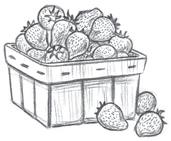
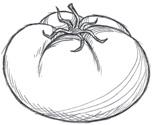
Watermelon Sources: Florida Department of Agriculture and Consumer Services, National Agricultural Statistics Service






Agriculture and agribusiness employ 2.42 MILLION Floridians.
In 2019, Florida’s citrus farmers produced $837 MILLION worth of oranges.
FollowFreshFromFlorida.com | 9
ILLUSTRATIONS: KRIS SEXTON; ORANGES: ISTOCK.COM/KATE_SUN

LET’S COOK
Learn more about Florida chefs and local ingredients

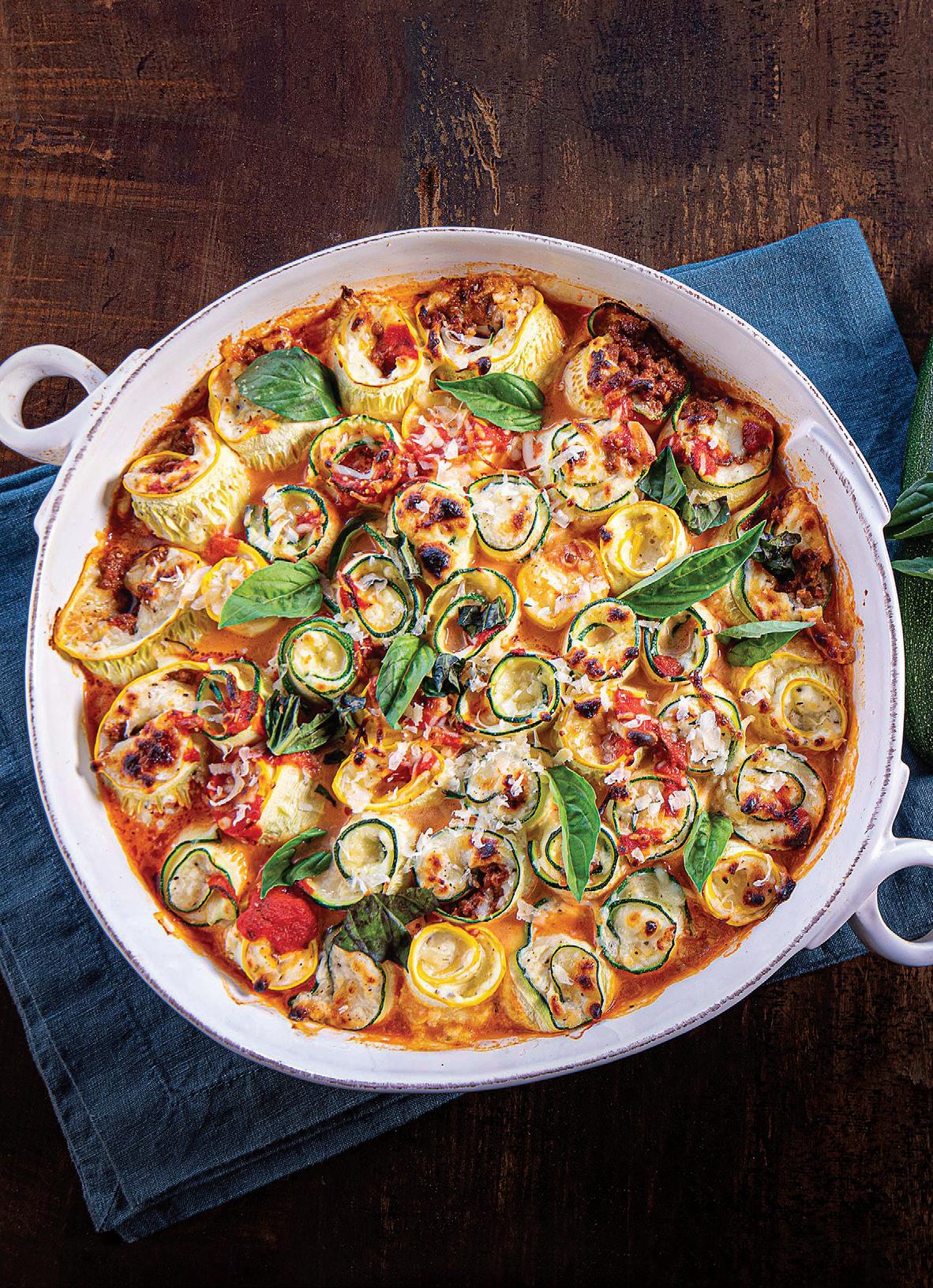
CHEF SPOTLIGHT / UNIQUE FLAVORS / WHAT’S IN SEASON
PHOTO: FLORIDA DEPARTMENT OF AGRICULTURE AND CONSUMER SERVICES
LOVE

LOCAL for
CHEF JUSTIN SHARES CULINARY INSPIRATION AND FLORIDA RECIPES
JUSTIN
TIMINERI, EXECUTIVE
chef at the Florida Department of Agriculture and Consumer Services, notes there are a slew of great chefs throughout the state of Florida getting creative with Florida produce and other homegrown commodities.
“I’ve been traveling up and down this state my entire life, and it’s really a culinary paradise. There are many chefs who are not well known but are utilizing wonderful things that are grown locally and building relationships with farmers, fishermen and ranchers in their area, and getting that product into their restaurants,” he says. “They are preparing Florida ingredients in a lot of amazing ways. We have some of the most diverse food in the state of Florida.”
Timineri specifically names Chef Dean Max of 3030 Ocean in Fort Lauderdale, Chef Jim Shirley of Santa Rosa Beach hot spot Great Southern Café and restaurateur Richard Gonzmart of Tampa-based Ulele as three peers he admires for utilizing local products.
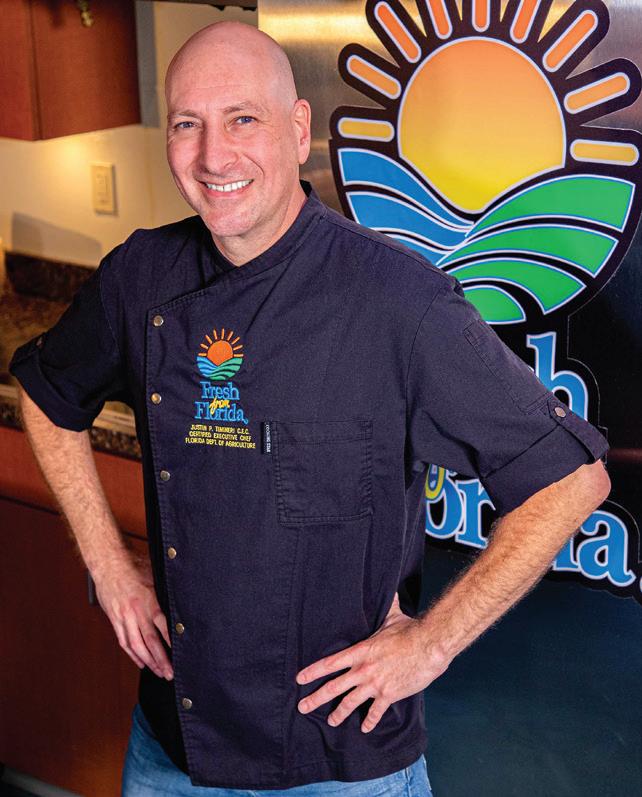
SOUTHERN SPECIALTY
Another chef Timineri admires is Southern cuisine expert Chef Art Smith, a sixth-generation Floridian who has prepared meals for former Florida Govs. Bob Graham and Jeb Bush.
“I call him ‘super chef’ because he’s been all over the Food Network, and his philosophy is to use fresh, local ingredients and put a Southern spin on those items,” Timineri says. “He takes these old-world Southern recipes and updates them with more modern techniques and fresh ingredients, whereas they were cooked with canned or frozen before.”
Smith oversees a restaurant in Disney Springs and has restaurants in Chicago, Washington, D.C., and Atlanta.
12 | Fresh From Florida LET’S COOK / CHEF SPOTLIGHT
PHOTO: FLORIDA DEPARTMENT OF AGRICULTURE AND CONSUMER SERVICES
Justin Timineri
He finds great joy in using local products from Florida farmers.
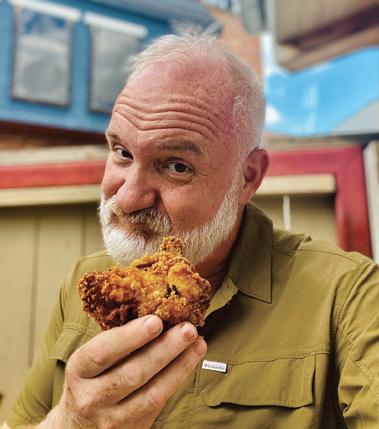
“When I came back to Florida six years ago, I became reacquainted with ‘Fresh From Florida’ and it all started with the opening of Walt Disney World’s Chef Art Smith’s Homecomin’,” he says. “When you get past the magical gate, you see the real Florida, and my Florida is really special and also tastes good.”
That’s why the restaurant focuses on recipes full of items like locally grown strawberries or South Florida tropical fruits. He has a great understanding of what’s growing in the state and incorporates as much as possible in the scrumptious dishes he creates.
“What I try to do at Homecomin’ is bring that taste of Florida to Disney,” Smith says. “Every season, we promote a different Florida farmer, and we use products from their farms – fruits, vegetables, chicken and more.”
In July, the restaurant featured Florida alligator and fresh collard greens.
Currently, Smith and his brother Gene own a working farm with a herd of black Angus in Jasper, where they grew up learning about the value of food.
“I grew up eating a lot of fresh fruits and vegetables, and we didn’t do it because it was cool; it was just necessity,” he says. “My parents were children of the Depression, so a large percentage of our food was grown, and my father had hams cured and sausages made.”
Smith also founded the Common Threads program, an organization that focuses on teaching youngsters how to eat healthily and serves as a diplomatic way to introduce kids to different cultures. The program
is currently in nine states, with Florida’s Miami program being one of the largest and most active.
GOOD FOR ALL
While Florida is widely known for producing citrus, Smith says
there are also great flavors coming from items like okra, sweet corn, baby spinach, arugula, peppers and more.
“I’d like to see more of it in the market because I think when people know it’s been grown around them, they are much more likely to want those items,” he says. “There’s just a lot of great stuff being grown all over the state.”
Timineri notes that when chefs buy local fruit and vegetables and other commodities produced in Florida, it keeps the money in the state and helps farmers, fishermen and ranchers who work incredibly hard to provide a safe and healthy supply of food.
“Any time we can support those wonderful people, it’s a win-win,” he says.
– Keith Loria

Florida Peach, Tomato and Mozzarella Salad
2 medium sized Florida tomatoes or
10 ounces bite-sized tomatoes, sliced
3 Florida peaches, sliced
½ cup fresh basil leaves, torn into bite-sized pieces
1 pound fresh mozzarella cheese, sliced
2 tablespoons balsamic or white balsamic vinegar
2 tablespoons olive oil, plus more if desired
Sea salt and fresh ground pepper to taste
Arrange the tomatoes, peaches, basil and mozzarella in a fun pattern on a chilled platter. Lightly season with salt and pepper. Drizzle evenly with the olive oil and vinegar.

FollowFreshFromFlorida.com | 13
PHOTOS: FLORIDA DEPARTMENT OF AGRICULTURE AND CONSUMER SERVICES
Art Smith
Florida Strawberry and Goat Cheese Tarts
3 cups Florida strawberries, sliced thin
½ cup Florida strawberry jam
Florida honey to drizzle
1 tablespoon natural Florida sugar
6 ounces goat cheese
1 egg, beaten
2 (9-inch round) prepared pie crusts, homemade or store bought
Preheat oven to 375 degrees. Cut out 3 equal-sized circles from each of the 2 larger pie crusts. Place all the cutouts on one or two lightly greased cookie sheets for baking.
Spread an even amount of strawberry jam in the center of each of the cut outs. Have fun evenly arranging or layering the sliced strawberries around the inside of all the cutouts, leaving room for a crust.
Fold the crust onto itself to form a crust edge. Crumble an even amount of the goat cheese over each of the strawberry tarts. Brush the crust edges of each of the filled tarts with the beaten egg wash. Lightly sprinkle the sugar evenly over all the crusts
Broiled Florida Oysters
2 dozen fresh Florida oysters, shucked and on the half shell
1 stick unsalted butter
Hot sauce (your favorite), to taste
2 tablespoons fresh parsley, chopped fine
3 lemons (1 for juice, 2 cut for garnish)
1 tablespoon fresh garlic, chopped fine
1 teaspoon seafood seasoning
¼ cup Parmesan cheese, grated
¼ cup panko or regular unseasoned breadcrumbs














1 teaspoon olive oil
Sea salt and fresh ground pepper, to taste
Preheat oven to 400 degrees. In a small sauce pot combine butter, hot sauce, garlic, seafood seasoning and lemon juice, season with salt and fresh ground pepper. Melt the butter mixture over medium-low heat, stir to combine. Taste and adjust with more lemon or hot sauce if needed. Remove from heat and set aside.
In a small mixing bowl, combine breadcrumbs, Parmesan cheese, olive oil and parsley. Use a fork to mix breadcrumb mixture and set aside.
where they were just brushed with the beaten egg. Place the tarts in the oven to cook for about 15 to 20 minutes or until the crust is golden brown and the strawberries are bubbling.
Remove the strawberry tarts from the oven and let cool slightly. Lightly drizzle strawberry tarts with Florida honey. Serve with fresh whipped cream and extra honey, if desired.
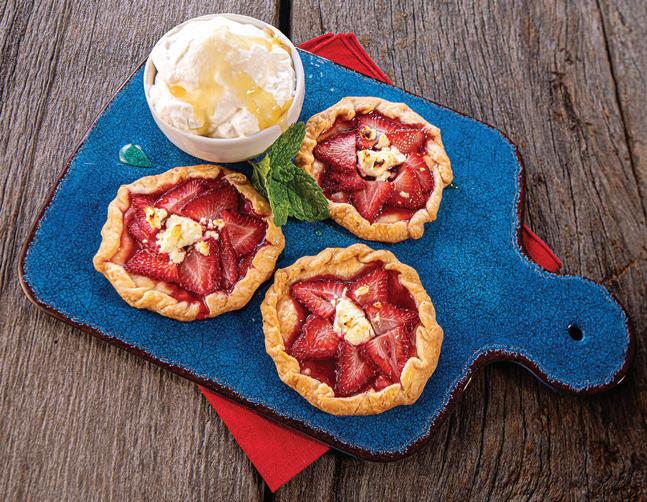
Place oysters on the half shell on a cookie sheet. Spoon an even amount of melted butter over each oyster. Next, evenly sprinkle breadcrumb mixture over the top of each buttered oyster. Carefully place oysters in preheated oven and switch to broil. During this stage of the cooking it is important to keep a
close eye on the oysters under the broiler. The oysters should only take 2 to 3 minutes to cook.
Carefully remove oysters from the broiler and let cool slightly. Serve broiled oysters with any leftover butter mixture and lemon wedges.

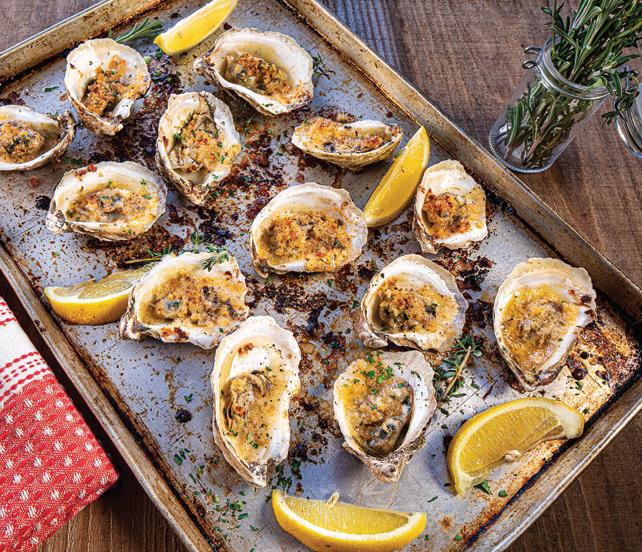
14 | Fresh From Florida
PHOTOS: FLORIDA DEPARTMENT OF AGRICULTURE AND CONSUMER SERVICES
Some Like It Hot
Datil peppers are a hot commodity in St. Augustine.

The small yellow-orange peppers add a kick to dishes like stew and chowder and condiments like mustard and honey – making them synonymous with St. Augustine cuisine.
“Datil peppers are really a local tradition,” says Evelyn “Prissy” Fletcher, commercial agriculture agent for the University of Florida’s Institute of Food and Agricultural Sciences Extension in St. Johns County.
Although the peppers have a strong local following, little is known about the origin of the datil pepper. There are theories that the peppers originated in China, Chile and Menorca, an island off the coast of Spain. They’ve been linked to other pepper varieties, including an African pepper called a fatalii and an Asian pepper called the yellow lantern chili.
Regardless of where datil peppers originated, St. Augustine has claimed them as their own. The datil pepper is the official plant of St. Johns County, and it’s rare to find datil peppers growing outside of the small Florida town.
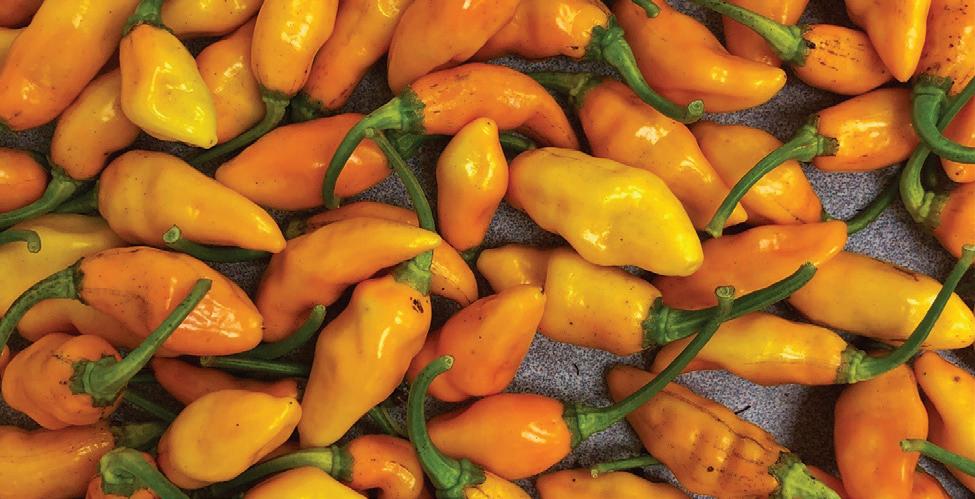
“It’s an heirloom pepper, and growers often collect their own seeds and keep them local,” Fletcher says. “There isn’t a big commercial market outside of the Tri-County Area.” The Tri-County Area consists of St. Johns, Putnam and Flagler counties.
Datil peppers might only grow a few inches long (and some can
be as petite as 1/4 inch in length), but these small peppers pack a lot of heat.
Datil peppers range from 100,000 to 300,000 on the Scoville scale, a rating used to measure the spiciness of peppers. Their heat is similar to habanero extra hot peppers but, unlike habaneros, datil peppers have a hint of sweetness, according to David Bearl, co-founder of Datil Dave, makers of datil pepper jams, jellies, seasonings and salts that are sold in retail stores throughout St. Johns County.
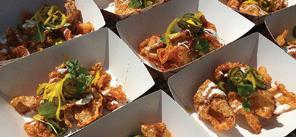
“You need to be careful with the heat and be a minimalist when you add datil products to food,” Bearl cautions.
Hot sauce made with datil peppers is also popular. Sara Hamilton, co-owner of Hamilton Heat Datil Pepper Hot Sauce in St. Augustine, makes a datil pepper hot sauce that can be added to everything including steak, chicken, shrimp, scrambled eggs and even cocktails.
“They do have a sort of sweet hit to them but don’t be fooled –they are hot,” Hamilton says. “Even though datil peppers are very spicy, done correctly, they are very tasty.”
DATIL PEPPER COOK-OFF
Every October, the University of Florida’s St. Johns County IFAS Extension office hosts the Datil Pepper Festival. The weekend event features datil pepper tastings, plants and products, and a cook-off competition. For details, go to visitstaugustine.com
No matter how datil peppers are used, sampling them is a rite of passage in St. Augustine.
“When you’re at a local restaurant, look on the menu for a datil pepper option,” Fletcher says. “And enjoy it with a local microbrew. Bog Brewery makes a great datil beer.”
– Jodi Helmer
FollowFreshFromFlorida.com | 15
LET’S COOK / UNIQUE FLAVORS
This spicy crop is a local favorite
PHOTOS, FROM TOP: EVELYN “PRISSY” FLETCHER; UF IFAS EXTENSION ST. JOHNS COUNTY AGRICULTURE

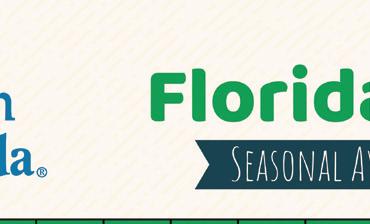

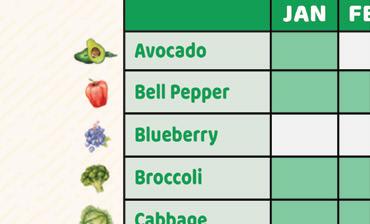





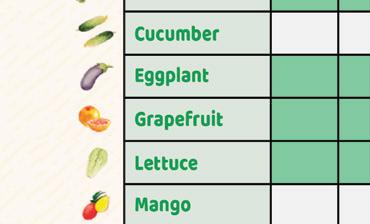


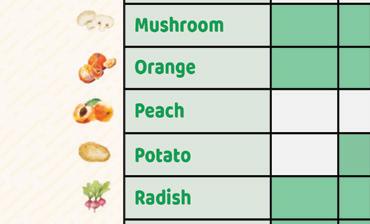


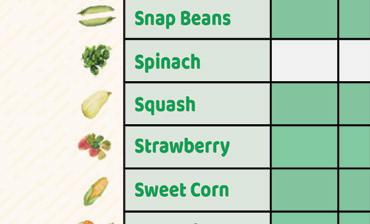



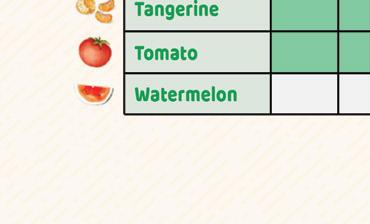




16 | Fresh From Florida
WHAT’S Fresh in Florida?
DISCOVER FLORIDA’S FRESHEST COMMODITIES ALL YEAR LONG

FLORIDA’S WEATHER provides prime growing conditions for all kinds of different commodities, ensuring fresh options year round. Finding and enjoying the freshest produce, meat and seafood is as easy as a trip to your local grocery store.
Discover what’s in season all year long using this handy seasonal availability calendar or by visiting our website, followfreshfromflorida.com .
Whether you’re craving a hearty vegetable, like cauliflower, or a juicy fruit, like peaches, you’ll be able to shop confidently, knowing you’re buying at just the right time of year.
You can also find delicious recipes using Florida’s commodities
on the website. So no matter the season, you’ll be able to cook up a feast using local produce. Do yourself a favor by taking the guesswork out of meal planning and shopping to fill your diet with the healthiest and freshest Florida products available.
FollowFreshFromFlorida.com | 17
LET’S COOK / WHAT’S IN SEASON
PHOTO: FLORIDA DEPARTMENT OF AGRICULTURE AND CONSUMER SERVICES
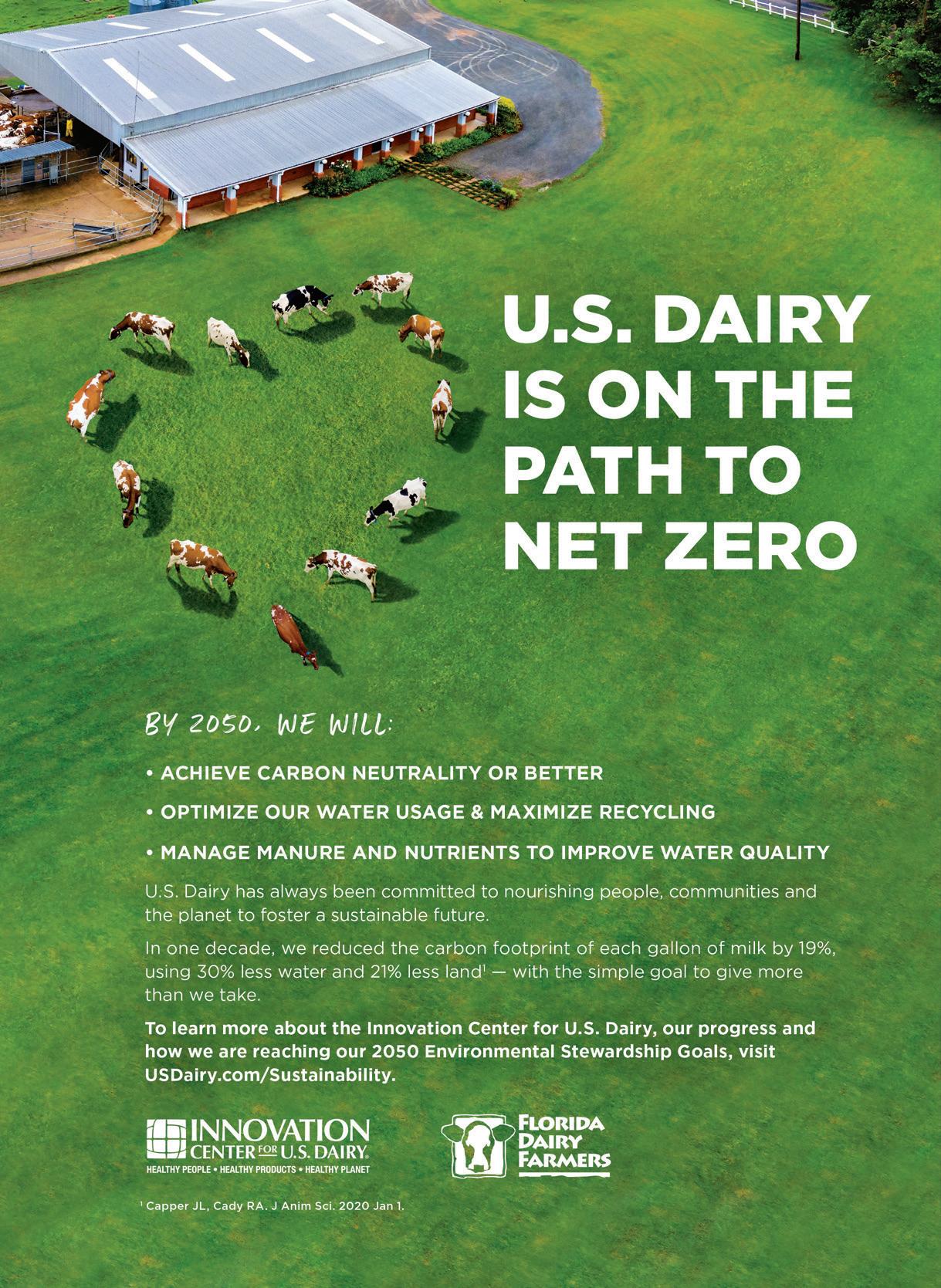
LOCAL








PHOTO:
STATE
Discover Florida agriculture around the state
FUN SEASONAL ACTIVITIES / FARM TO MUSEUM / AGRITOURISM / AQUACULTURE / STATE FORESTS
FLORIDA
FAIRGROUNDS
Fairs, Festivals and Fun, Oh My!

UPCOMING FESTIVALS, FAIRS AND EVENTS YOU WON’T WANT TO MISS
CRAVING SOME FUNNEL CAKE? FORTUNATELY, there’s a fair or festival in nearly every corner of Florida. In addition to every fried food you can imagine, fairs pay homage to the state’s agriculture industry through numerous exhibits and competitions. Add live entertainment, carnival games and amusement rides, and your local fair offers the opportunity to be a kid again – at least for a day.
FLORIDA STATE FAIR, Feb. 10-21, 2022
Boasting the largest midway in the country, the 12-day Florida State Fair in Tampa never strays
from its core purpose as a showcase of the state’s agriculture industry. Attracting close to 500,000 visitors each year, the Florida State Fair ranks fifth as the most-attended fair in the country, according to industry news source, Matt’s Carnival Warehouse. Almost all entertainment experiences, including thrill shows, musical acts, circus shows, educational exhibits, agricultural experiences and more, are included with the price of admission. In the Creative Living Competitions, youth and adult artists and crafters, bakers, woodworkers, horticulturists, photographers and more bring their best work
LOCAL FUN
20 | Fresh From Florida
/ SEASONAL ACTIVITIES
to the fair. Cracker Country, Tampa’s only living history museum, with 13 original structures dating back to the late 1800s, is open every day of the fair, with costumed interpreters portraying everyday life in 1890s rural Florida.
GRANT SEAFOOD FESTIVAL, March 5-6, 2022
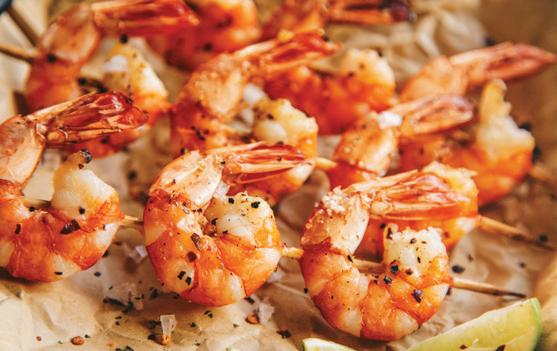
Run solely by volunteers, Grant Seafood Festival celebrates the rural community’s heritage as a fishing village. What started as a community fish fry in 1966 has exploded into the longest-running seafood festival in the Southeast. And while you enjoy clams, fish, lobster, shrimp, oysters, crawfish, scallops or one of the other delicious offerings, many made with the same homemade recipes passed down through generations, you can feel good about your purchase because proceeds from the festival fund the Grant Community Center and scholarships for Brevard County-area young people. The festival also features live music, arts and crafts. Admission and parking are free.
COLLIER FAIR, March 17-27, 2022
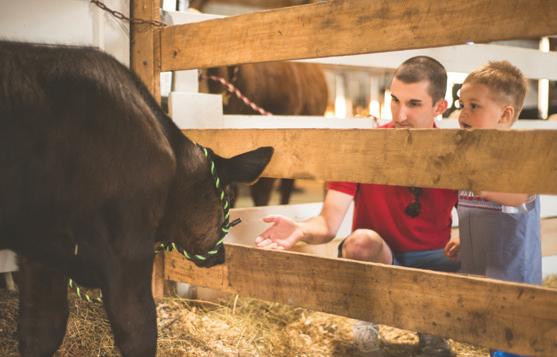
The Collier Agricultural Fair & Exposition Inc., a not-for-profit organization, promotes education and Southwest Florida agriculture by producing an 11-day fair at the Collier Fairgrounds in Naples. Family fun ranges from livestock exhibitions and live entertainment to midway rides and all the carnival foods you love. In the Family Living building, you
can view quilts, other handiwork and cultural arts, horticulture and homemade goodies such as preserves, cakes and pies. Other activities include chainsaw carving, a demolition derby, a petting zoo and magic shows – truly something for everyone. Parking is free.
NORTH FLORIDA FAIR, Nov. 3-13, 2022
More than 140,000 people enjoy the North Florida Fair, a large agricultural festival in Tallahassee celebrating accomplishments in agriculture, education, industry and recreation. Fairgoers enjoy rides, food, entertainment and fun for all ages, but agriculture remains the focus of the fair, which is celebrating its 80th year.
At the fair, youngsters show off their skills through 4-H and FFA competitions in dairy cow and goat categories. Attendees can also see award-winning beef cattle, poultry and rabbits. In addition, visitors can view fine arts and crafts, flower shows and drool over the baked goods and harvest vegetables in their respective contest categories. Many attendees enjoy multiple days of fun by taking advantage of one of the 450 RV camping sites on the North Florida Fairgrounds. With parking, exhibits and entertainment included in the price of admission, the North Florida Fair offers fun for all ages.
To find more Florida agriculture events in your area throughout the year, visit FDACS.gov.
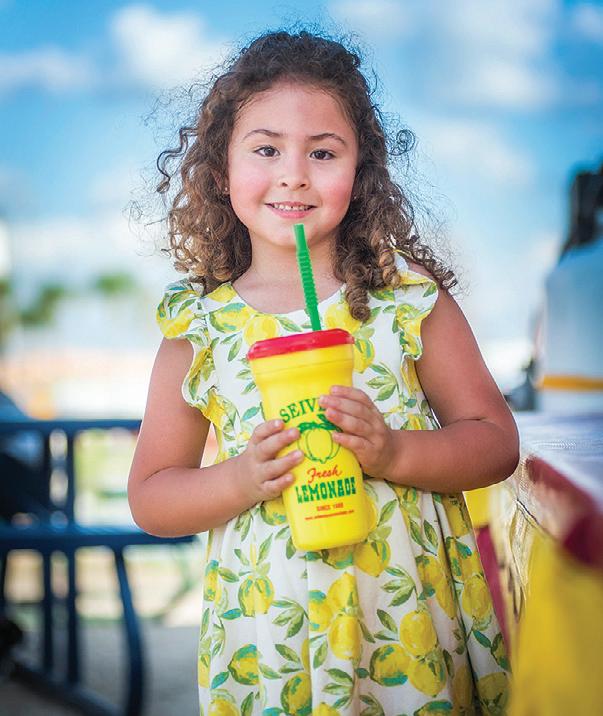 – Kim Hill
PHOTOS: FLORIDA STATE FAIRGROUNDS; COW: ISTOCK.COM/HUEPHOTOGRAPHY; SHRIMP: ISTOCK.COM/XSANDRA
– Kim Hill
PHOTOS: FLORIDA STATE FAIRGROUNDS; COW: ISTOCK.COM/HUEPHOTOGRAPHY; SHRIMP: ISTOCK.COM/XSANDRA
FOOD The Science of
CAFÉ AND EXHIBIT AT ORLANDO MUSEUM CONNECT VISITORS TO FARMERS
AT THE ORLANDO SCIENCE Center, visitors can dive into Florida’s dynamic ecosystems, tap into the engineering design process, uncover the world of dinosaurs and now get to know Florida’s food heroes at the 4Roots Café.


4Roots Farm, located in the heart of Orlando on 40 acres,
is a passion project of the 4Rivers Foundation, founded by John Rivers. The urban farm was established to teach the community how their food is grown and help them understand the critical role of a farmer. JoAnn Newman, president and CEO of the Orlando Science Center, was intrigued by 4Roots’ mission.
A TASTY MISSION
“Though initially I didn’t think the museum was a good fit for a 4Rivers restaurant, the more I learned about the museum’s mission of inspiring young hearts and minds, the more I came to appreciate the direct alignment with the mission of the 4Roots Farm,” Rivers says. “We ended up not only building a restaurant but an entire exhibit on how food is grown and the important role our farmers play in the process.”
Newman adds that the result combines the science center and Rivers’ strengths to create experiences and exhibits that tell stories while teaching.
The café features fresh, healthy, local food in a fast-casual environment. While delicious food is important, both Newman and Rivers are excited about the exhibit accompanying that food.
“We have some really cool interactive elements,” Newman says. “One piece highlights the importance of pollinators to food. We’re adding hydroponic towers that show how to grow food without soil, and there’s a beautiful garden wall. And then we have a large LED screen in the middle where we’re highlighting food heroes, including stories of Florida farmers.”
FARMING HEROES
The Food Heroes exhibit is presented by Orlando Health.
22 | Fresh From Florida LOCAL FUN / FARM TO MUSEUM
PHOTOS: 4R RESTAURANT GROUP
Kids learn about food and farming at the 4Roots Café and interactive Food Heroes exhibit in the Orlando Science Center.
Its interactive stations help visitors explore where food comes from and highlight the role of good nutrition. Both the exhibit and the café aim to inspire and empower the public to improve food sustainability in their communities.

Rivers says one of the most important parts of the café is making the connection between food and farmer.
“It’s really easy to disconnect from the actual food you’re consuming,” he says. “One of my highest goals is that when a visitor is eating that lettuce or tomato, that they know where it was grown and get to see the farmer on the screen.”
Newman agrees and says she always loves when visitors experience that “aha” moment.
“The more you dive into understanding what it takes to get food on your table, the better appreciation you have for those who grow it,” she says. “When you put a face to your food, it takes on a whole new level of ‘Oh wow!’ We live for those moments.”
– Rachel Bertone
IF YOU GO…
The Orlando Science Center is open every day from 10 a.m. to 5 p.m. Advanced time-entry tickets are required. Please visit osc.org/visit or call (407) 514-2020 to reserve your time and for pricing information.
The 4Roots Café is open daily from 11 a.m. to 3 p.m.
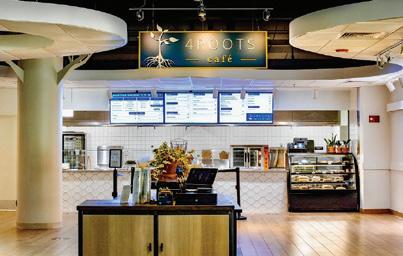
EXPLORE Florida’s U-Pick Farms
FROM PRODUCE TO FLOWERS, IMMERSE YOURSELF IN THE AGRICULTURE PROCESS WHEN U-PICK
DID YOU KNOW THAT FLORIDA is home to more than 100 U-pick produce and flower farms? Whether you’re in Jacksonville or Miami –or somewhere in between – you’ll find plenty of options for picking fresh fruit, vegetables and flowers straight from the field. A farm visit is an excellent opportunity to enjoy some sunshine, fresh air and delicious produce while spending time with family and friends. So, visit these fruit farms to start your U-pick adventures.
UNDER THE VINE DRAGON FRUIT FARM
If you’re looking for a nontraditional U-pick option, consider Under the Vine Dragon Fruit Farm in Homestead. This family-owned farm has been operating since 2016 and prides itself on responsible and sustainable farm practices. Under the Vine Dragon Fruit Farm offers red, white and pink dragon fruit varieties on its more than 12-acre property. They allow visitors a U-pick option by appointment only, and generally the U-pick season is from
July through November. Dragon fruit grows on a cactus, so the farm requires protective gloves and expert guidance for picking. In addition to being an active farm, the property also includes a farmhouse available for rent through Airbnb and space for weddings and other private events.
Visit underthevinefarm.com for more info and call (305) 209-8819 or email info@underthevinefarm.com to schedule a U-pick time.
SPIVEY FARMS
If you’re looking for a U-pick option near the Tampa area, Spivey Farms in Plant City is the place to be. A variety of produce

TIPS TO MAKE THE MOST OF YOUR FARM VISIT:
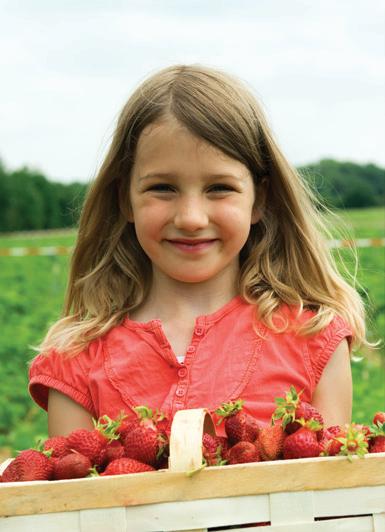
• Call ahead to make sure the farm is open and see if you need to schedule your visit.
• Pack plenty of water and snacks.
• Wear comfortable shoes. Closed-toe may be best.
• Bring hats, sunglasses, bug spray and sunscreen to stay safe and comfortable.

24 | Fresh From Florida
LOCAL
FUN / AGRITOURISM
PHOTOS, FROM TOP: ISTOCK.COM/DZM; JUDITH FREDERICH
English Lake Farm
is grown on the 82-acre familyoperated farm, including peppers, tomatoes, squash, peas and sweet corn. The farm’s primary crop is strawberries, which are grown commercially during the winter months, but the farm offers a U-pick option for visitors beginning in March each year. Visit myspiveyfarms.com or search Spivey Farms on Facebook for farm updates and U-pick dates and times.
BLU BY U

If you want to make a day of it, Blu By U blueberry farm in Jacksonville has plenty of activities to keep you busy. They offer blueberry picking from late April through late May each year. The 2021 season was the first for strawberry picking, which started slowly in April and was expected to continue until the fall. Visitors can call, email or send a Facebook message to schedule an appointment for berry picking. The farm also includes a petting zoo, sandbox, butterfly house, volleyball court and covered picnic area. Guests can also purchase bait and tackle on-site to fish in the farm’s pond. If shopping is more your style, you can find honey, soaps, jams and T-shirts in the farm’s country store. Visit blubyujax.com and call (904) 465-1811 or email blubyujax@ gmail.com for an appointment to pick berries.
MARGO’S BLUEBERRY FARM

Margo’s Blueberry Farm in Brooksville is family-owned and -operated and has been in business since 1993. Its blueberry season runs from April through

May each year, with an option for U-pick by appointment. The farm updates U-pick dates and times on their Facebook page. Visit margosblueberryfarm.com to learn more.
ENGLISH LAKE FARM
English Lake Farm in Fort Ogden offers a variety of U-pick options. Blueberries are the farm’s staple crop, with U-pick season beginning in mid-March. There is also a variety of citrus trees on the property that are in season for U-pick starting in late October. Prior to the pandemic, the farm offered mini lemon-blueberry Bundt cakes that were popular with visitors. Since English Lake Farm is strictly a U-pick farm and doesn’t harvest commercially, visitors have a great selection of quality berries to pick.
Whether you visit a crop maze, pick fruits and vegetables, check out a working dairy or attend a wedding in a barn, farmers and ranchers are opening their doors to the public to share the “down on the farm” experience.
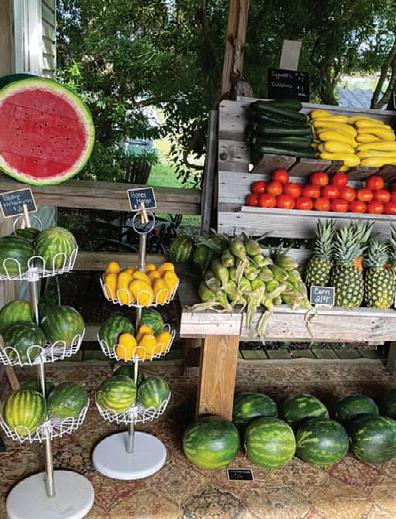
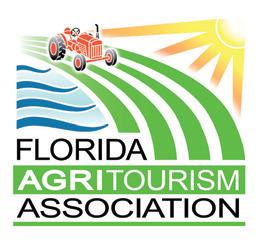
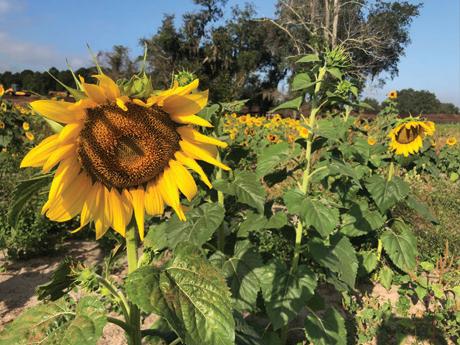
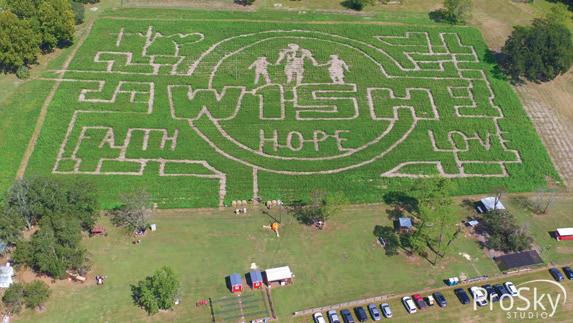
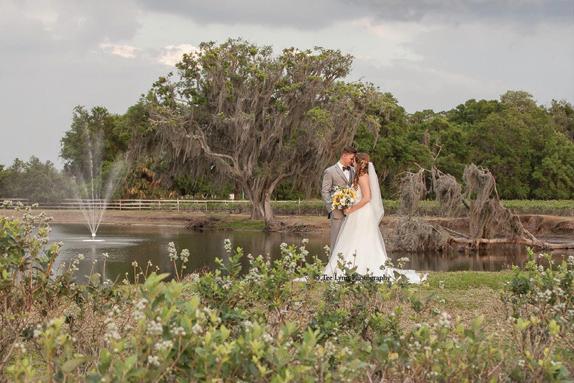
They offer flexible hours and are usually open seven days a week. They also furnish buckets and bags for picking. Confirm U-pick days and hours before your visit by calling (863) 990-6164, and visit englishlakefarm.com for more information.
– Amanda Allworth
FollowFreshFromFlorida.com | 25
DOWNLOAD OUR FREE APP to find a farm experience and check out our website visitfloridafarms.com We invite you TO VISIT A FLORIDA FARM AND SEE A DIFFERENT SIDE OF FLORIDA! We invite agritourism operators to join our association!
PHOTO: BLU BY U
Blu by U
A Deep Dive into Tarpon Springs
COMMUNITY’S SPONGE INDUSTRY HONORS GREEK HERITAGE
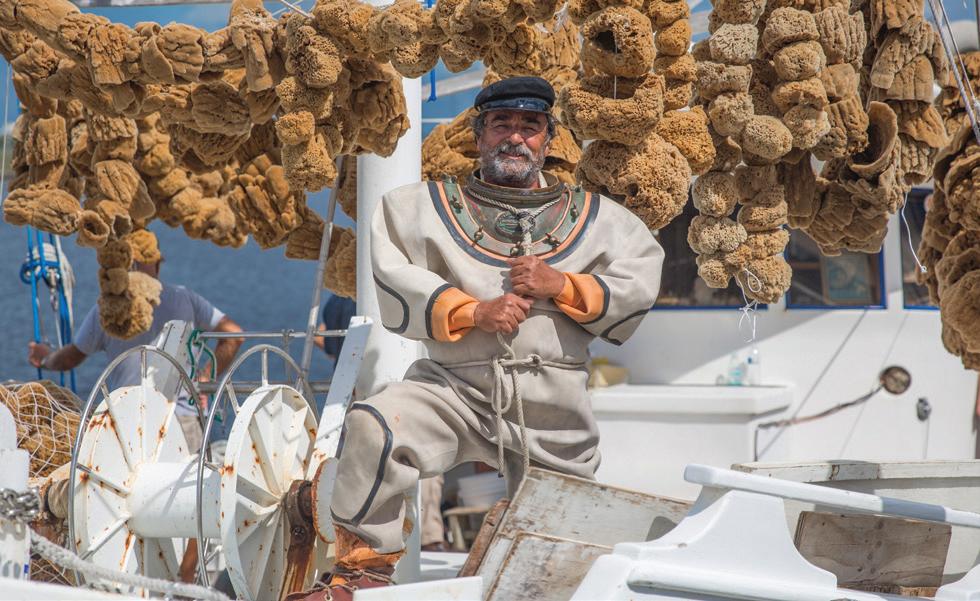
SPONGE DOCKS SEAFOOD FESTIVAL
Nov. 11-13, 2022
Enjoy live music, seafood, shopping and more at this annual festival on Dodecanese Boulevard, held annually in November. facebook.com/ SpongeDocksSeafood
Rich in history, tradition and charm, Tarpon Springs’ acclaim stems from the sponge industry, dating back to the early 1900s.
AN ACCIDENTAL DISCOVERY
Turtle fishermen from Key West accidentally laid the groundwork when their nets snagged on the sponges. After this discovery, the industry shifted from Key West,

Cuba and the Bahamas to Tarpon Springs.
By 1900, the city was the largest sponge exporter in the U.S., with many Greek immigrants coming for the sponging opportunity. Several families of original spongers still live in the area, maintaining the history and Greek traditions.
“You really get a sense of that Greek community and culture when you’re there,” says Mackenzie
Comerer, Visit St. Pete/ Clearwater senior media relations manager. “Nearly everybody there that owns businesses of Greek heritage has the history of their family members coming over in the early 1900s to establish the sponging industry.”
The downtown area resembles Greek heritage but with a Victorian flair. It is an entirely different vibe from the sponge docks on Dodecanese Boulevard, only a
26 | Fresh From Florida
LOCAL FUN
/ AQUACULTURE
PHOTO: JACOB PIERCE/COURTESY OF VISITSTPETECLEARWATER.COM
half-mile away.
“Completely untouched for decades. It is fabulous!” says Jean Hungiville, president/CEO of the Tarpon Springs Chamber of Commerce. “This is what a lot of people come to Tarpon to see, and this is where the sponging industry was originally done.”

UNDERWATER INDUSTRY
“It takes years of practice to be a real sponge diver,” says Anastasios “Taso” Karistinos, who moved from Greece to Tarpon Springs in 1972.
Karistinos says being a sponge diver brings you closer to the ocean because spongers immerse themselves in the sea, unlike fishermen who stay on top of the water.
“As a sponge diver, I’m one with the sea,” he says. “When you get into it and you spend so much time underwater, then you see the real beauty of the ocean. You always have the fear. You always have the respect.”
Spongers dive 15 to 60 feet deep, walking along the bottom at a 30- to 35-degree angle to harvest the sponges.

A sponge is a multicell animal, not a plant. Spongers bring the harvest back to the docks where tissue is removed, and the sponge is shaped to sell at the market. The natural sponges in the shops are the skeletal portion.
Several shops in the
area create an array of soaps to pair with the sponges. Natural sponges last for three to five years, but only use soap and water –detergent and natural sponges do not mix.
Due to red tides and fewer sponge divers through the generations, the industry has changed, but Karistinos is optimistic for its future.
“Sponge industry is never going to be the way it was,” he says. “But always going to be something over here. Always going to be a few spongers.”
INTERNATIONAL INFLUENCE
The Greek influence creates a unique atmosphere offering tourists an authentic experience.
The sponge industry brings $2 million to the area. However, Hungiville says the area brings in $20 million in tourism revenue annually due largely to the sponge industry, so it actually contributes $22 million.
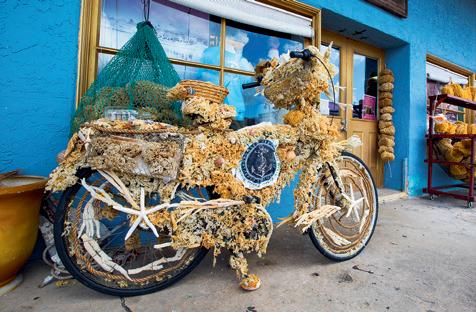
Whether coming in for the annual Greek Orthodox Epiphany celebration in January or visiting the sponge docks and downtown, tourists are guaranteed an extraordinary adventure filled with Greek food, history and unforgettable memories.
“It’s like traveling internationally without hopping across the pond,” Comerer says.
– Carisa Ownby
Yellow vs. Wool Sea Sponges
Wool sea sponges have an exceptionally soft texture, absorption and durability. They are ideal for spa and bath use and cleaning delicate surfaces like vehicle clear-coats, fine china, crystal and more. Tradesmen and artisans use these for creating faux painting effects, wallpapering, pottery-making and other similar projects. Yellow sponges are not as soft or absorbent as wool sea sponges, but they are more economical and better for exfoliating, scrubbing, tile and grout work, and household cleaning.
Source: acmespongeonline.com
FollowFreshFromFlorida.com | 27
PHOTOS:
COURTESY OF VISITSTPETECLEARWATER.COM; FROM TOP: STEVEN P. WIDOFF; JUSTIN WARD
A bike decorated with shells and sponges at the sponge docks.
Adventure
AWAITS
STATE FORESTS PROVIDE NATURAL ENTERTAINMENT
Across more than 1 million acres of wilderness, visitors to Florida State Forests paddle inland lakes, wander tree-lined trails and locate endangered red-cockaded woodpeckers in towering longleaf pines.
“You are able to relax and find comfort in our State Forests,” says Lorna Radcliff, state recreation coordinator for the Florida Forest Service, a division of the Florida Department of Agriculture and Consumer Services. “Spending time in the forest is healing. It helps keep you healthy and active.”
FUN FOR ALL AGES
Throughout Florida, 38 State Forests and one ranch welcome up to 20 million visitors annually to connect with the wooded land that covers nearly half of Florida’s landscape.
The natural features of each State Forest dictate the available recreational activities, such as hiking, camping, horse riding, biking, kayaking, bird watching, hunting and fishing. For example, Withlacoochee State Forest, north of Tampa, uniquely draws ATVs and dirt bikes for 2,600 acres of
off-road facilities. Equestrians commonly use 100 miles of linked trails for endurance rides west of Ocala at Goethe State Forest. At Blackwater River State Forest near Pensacola, families take tubes for a relaxing float down the river.
Florida’s State Forests designate 1,300 miles of trails for hiking, offer more than 800 campsites and include 3,000 miles of roadways to drive through, providing opportunities for everyone to experience nature on Florida’s public lands.

The Great Florida Birding and Wildlife Trail outlines a driving tour of 510 wildlife viewing sites across the state. Agencies from local to federal levels collaborate to create the trail, which includes stops at about half of Florida’s State Forests.
METICULOUS MANAGEMENT
The ability to offer outdoor recreational activities takes sound forest management, a point of pride for the Florida Forest Service.
“A healthy forest is one that is managed,” says Brian Camposano,
28 | Fresh From Florida
LOCAL FUN / STATE FORESTS
PHOTO: ANN HOPTA/FLORIDA DEPARTMENT OF AGRICULTURE AND CONSUMER SERVICES
assistant bureau chief of the Forest Management Bureau at the Florida Forest Service.
On Florida’s State Forests, staff aim to control invasive species, pests and diseases. In addition, they work to maintain appropriate tree species, biological diversity and timber stands from various age classes.
Prescribed fire also aids in diversity and is the most valuable tool for managing Florida’s fire-dependent and fire-prone ecosystems.
“Florida leads the nation in the use of prescribed fire,” Camposano says, labeling the year-round management practice a hallmark of the agency.
By clearing out overgrowth, prescribed fire protects wildlife and native habitats while also reducing the risk for catastrophic wildfires and the subsequent devastation to communities.
The Florida Forest Service also
works with the private forest industry to make its forests sustainable, a goal achieved through timber harvesting, timber stand improvements and reforestation projects.
“The private forest industry helps us conduct the work as we transition each forest closer to its natural state,” Camposano says. “There is a lot of work to be done, and it is important we remain good stewards of the land to ensure these ecosystems are here for future generations.”
WILL TRAVEL FOR TRAILS

Radcliff says the Florida National Scenic Trail draws hikers from around the nation for a 1,500-mile trail that extends from the Panhandle to the Big Cypress National Preserve in southern Florida. Multiple agencies host the trail to offer a continuous hike that crosses through eight State Forests.
No matter the activity, State Forests provide outdoor classrooms for any age to explore and learn. Kiosks, displays and websites offer information about what visitors may encounter on Florida’s State Forests.
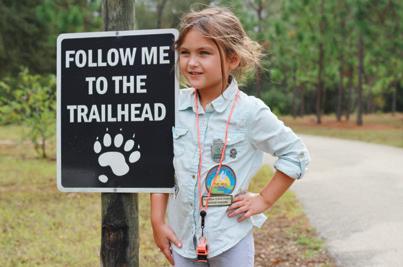
Visit FDACS.gov/StateForests to learn more and plan your next adventure.
– Joanie Stiers














Florida’s Forests
There are 38 Florida State Forests across the state including the four featured here.
1 BLACKWATER RIVER STATE FOREST Milton Acreage: 213,508

2 JENNINGS STATE FOREST Middleburg, Acreage: 25,152
3 WITHLACOOCHEE STATE FOREST Brooksville Acreage: 164,073
4 MYAKKA STATE FOREST Englewood, Acreage: 8,593

Florida’s State Forest systems are some of the finest and most diverse in the U.S., offering various natural, recreational and cultural opportunities. The fees charged help with maintenance and upkeep for these beautiful areas.
• Children 6 years and younger – free



• Individual fee for day-use areas - $2




• Annual day-use entrance pass (six people maximum) - $45
• Primitive camping (per site, maximum five people) - $10
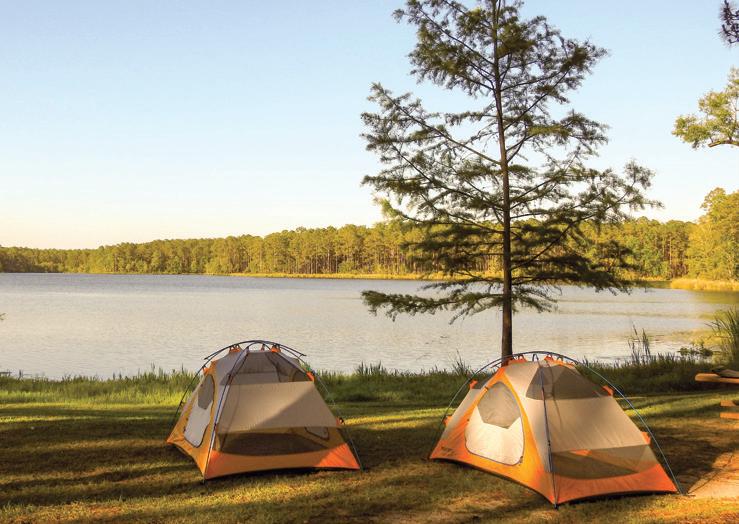
• Group camping area (per day, up to 10 people and four vehicles) - $20
• Campground – no electricity (five people maximum and two vehicles) - $15
• Campground – electricity (five people maximum and two vehicles) - $25
Visit FloridaStateForests. ReserveAmerica.com to learn more about State Forest reservations and fees.
Source: Florida Department of Agriculture and Consumer Services

FollowFreshFromFlorida.com | 29
1 2 3 4
PHOTOS: FLORIDA DEPARTMENT OF AGRICULTURE AND CONSUMER SERVICES
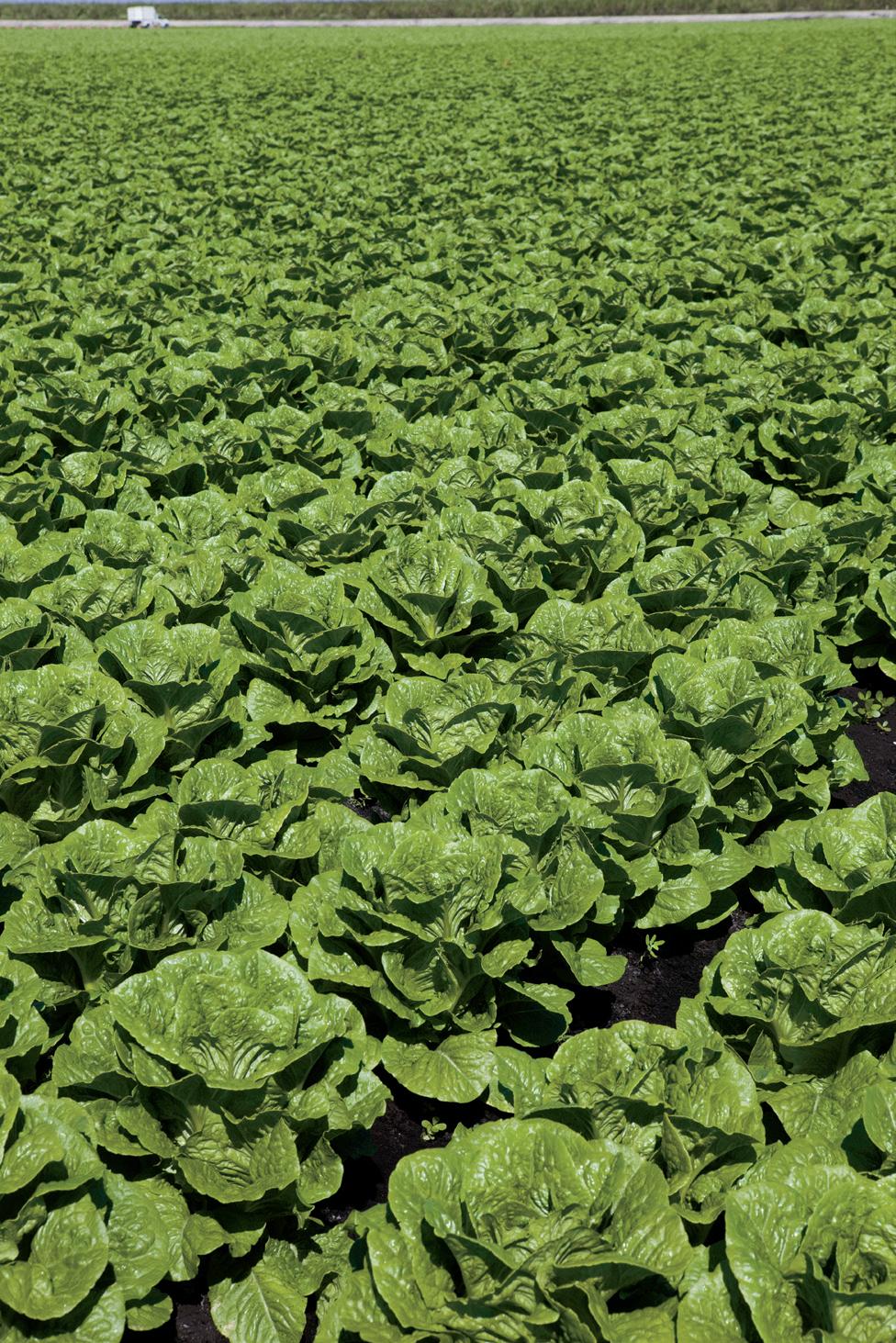


30 | 2305 CYPRESS LN. • BELLE GLADE, FLORIDA 33430 561-996-1980 TEL • 561-996-9210 FAX
FLORIDA’S FARMERS


MEET YOUR NEIGHBORS,
the farmers, ranchers and fishermen who supply food to Floridians and the world

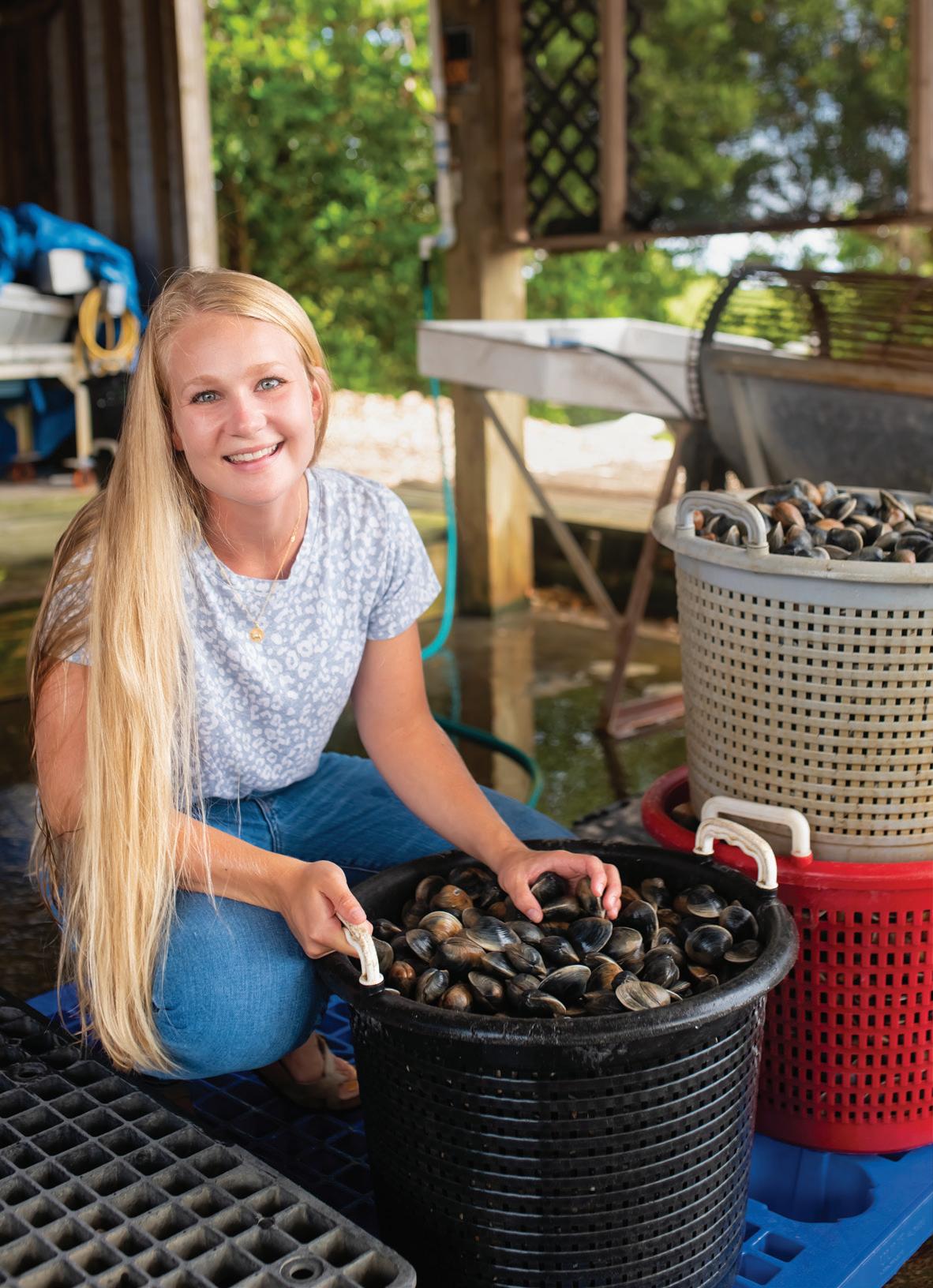
GET TO KNOW
FARMERS MARKETS / MARKETING /
/ AQUACULTURE
FAMILY FARMS
PHOTO: JIMMY HO
WITH LOVE, From Florida
FARMERS MARKETS SHIP FLORIDA COMMODITIES ACROSS THE COUNTRY
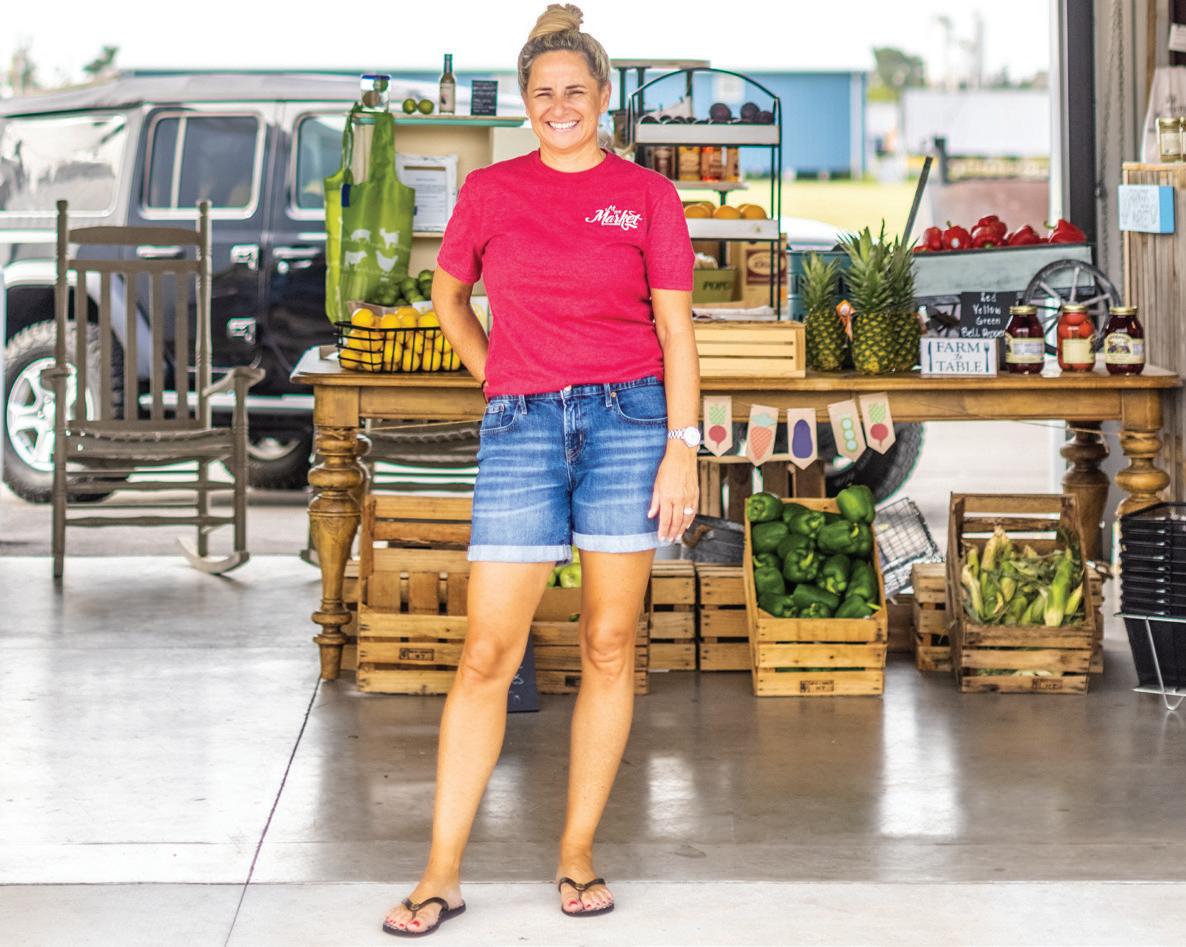
32 | Fresh From Florida
FLORIDA’S FARMERS / FARMERS MARKETS PHOTO: BRIAN TIETZ
Betsy Barnwell manages a restaurant and farm stand at the Fort Myers State Farmers Market.
For more than 80 years, Florida state farmers markets have provided communities across the state and nation with fresh, delicious products.
During the Great Depression, the state searched for a project to help with employment, leading to the development of Florida state farmers markets. To conveniently move commodities, markets were opened next to railways, creating jobs throughout Florida. The 1960s saw the peak with over 30 markets. Now, 12 markets remain.
The market is a commercial epicenter for agribusinesses to collect, sort, pack and ship commodities to cities across the country. It is also a gathering place for the ag industry and the community.
THE WALL STREET OF FLORIDA AG
“At one time, Pompano State Farmers Market was considered the Wall Street of the produce industry,” says J.T. Guida, CEO of Pexco Produce Sales with locations at the Plant City and Edward L. Myrick State Farmers Markets (formerly Pompano State Farmers Market).
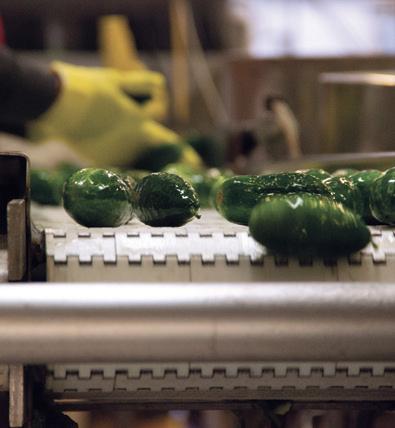
The expansion of housing, packing houses and other land demands have changed the farmers market through the years, but Pexco seeks opportunities to grow with these changes.
While most think imports from outside of Florida hinder the markets, Guida says imports have provided an opportunity for consolidation. Often when a truck picks up import commodities and isn’t full, companies reach out to the markets to fill the rest of the space.
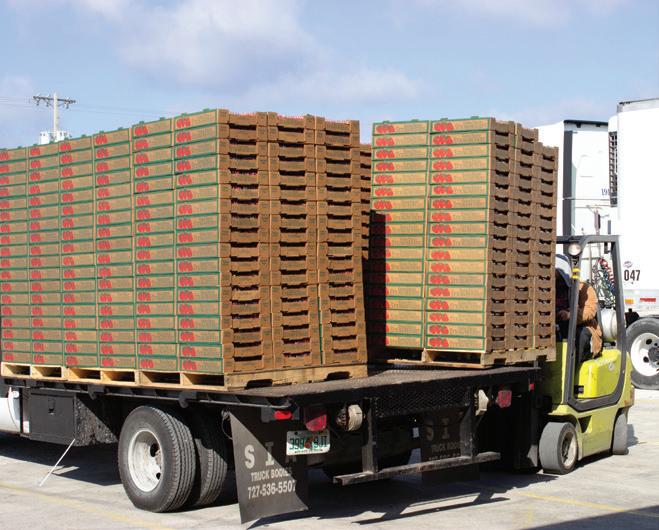
“A lot of people say that Pexco has been the leader in the consolidation business. We were consolidating back in 1970-72. We’ve been doing it for 50 years. And the best part about it: We are being emulated all the time.”
GIFT BASKETS AND BROKERING & BEYOND
Beth Boris Waldorf grew up going to the state farmers markets with her father, Ira Boris, who started the I. Boris Company at the Pompano State Farmers Market in 1954.
Waldorf recalls childhood memories walking along the platform with her father as he selected the produce. “All the produce coming in, coming off the farm trucks and going onto the 18-wheeler trucks,” Waldorf says. “That whole thing was just very fascinating.”
Farmers would bring in the produce and unload it onto conveyor belts – on rollers, not electric – and stack the commodities up high until the truckers came to pick up and distribute the goods across the country. But as production houses moved to the farms, Pompano became more of a consolidation point.
Although it isn’t the hustle and bustle the market used to be, the brokering aspects have not changed much. Price lists flow in on Mondays and Thursdays and are sent to the customers for ordering.
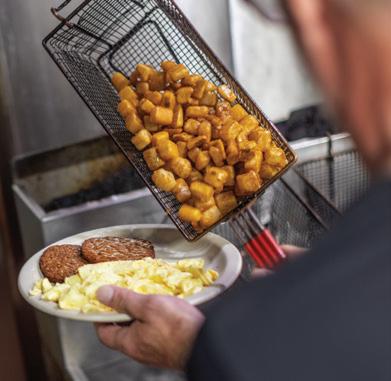
FollowFreshFromFlorida.com | 33
PHOTOS: FLORIDA DEPARTMENT OF AGRICULTURE AND CONSUMER SERVICES; BREAKFAST: BRIAN TIETZ
Florida has 12 state farmers markets where agribusinesses collect, sort, pack and ship commodities across the country.
State Farmers Markets
Florida’s state farmers market system connects the state and nation with Florida commodities. Several markets act as redistribution hubs for commodities to be trucked across the country and are closed to the public. In contrast, others boast retail, restaurants and other amenities welcoming the public to find local produce and goods. Due to seasonal changes, check to confirm the hours before visiting.
1 EDWARD L. MYRICK STATE FARMERS MARKET
1255 W. Atlantic Blvd. Pompano Beach (954) 247-0232
pompanosfm@FDACS.gov
2 FLORIDA CITY STATE FARMERS MARKET
300 N. Krome Ave. Florida City (305) 246-6334

flcitysfm@FDACS.gov
3 FORT MYERS STATE FARMERS MARKET
2744 Edison Ave. Fort Myers (239) 332-6910
ftmyerssfm@FDACS.gov






4 FORT PIERCE STATE FARMERS MARKET
3479 South, U.S. 1 Hwy. Fort Pierce (772) 468-3917

ftpiercesfm@FDACS.gov
5 GADSDEN STATE FARMERS MARKET 18212 Blue Star Hwy. Quincy (850) 617-7384
gadsdensfm@FDACS.gov


6 IMMOKALEE STATE FARMERS MARKET
424 New Market Road E. Immokalee (239) 658-3505

immokaleesfm@FDACS.gov
7 PALATKA STATE FARMERS MARKET
225 U.S. 17 Palatka (386) 329-3713 palatkasfm@FDACS.gov
8 PLANT CITY STATE FARMERS MARKET
1305 W. Martin Luther King Jr. Blvd., Suite No. 5 Plant City (813) 359-2620 plantcitysfm@FDACS.gov


9 STARKE STATE FARMERS MARKET
2222 N. Temple Ave. Starke (386) 329-3713 starkesfm@FDACS.gov
10 SUWANNEE VALLEY STATE FARMERS MARKET 2758 County Road 136 White Springs (386) 234-6027 suwanneevalleysfm@FDACS.gov
11 TRENTON STATE FARMERS MARKET
830 NE Trenton Blvd. Trenton (386) 234-6027 trentonsfm@FDACS.gov
12 WAUCHULA STATE FARMERS MARKET
535 S. 6th Ave., Suite No. 101 Wauchula (863) 773-9850 wauchulasfm@FDACS.gov

Alongside the brokering business, Waldorf started Miss Beth’s Groves & Gifts. “A lot of people like to ship something from Florida,” says Waldorf, who ships Florida citrus gift fruit as well as all-occasion baskets with honey, fruit wine and more, allowing people and corporate clients to ship products across the country.
RECIPE FOR NOSTALGIA
The oldest restaurant in Lee County, Farmers Market Restaurant, welcomes guests for fresh food created from local commodities at the Fort Myers State Farmers Market.
“Recipes have been handed down, and we work hard to preserve them and to serve them consistently even though they are made from scratch daily,” says Betsy Barnwell, who owns and manages the restaurant.
The tradition and memories created within the restaurant resonate with visitors, along with the fresh, local food.
“The nostalgia this restaurant gives people is really special,” Barnwell says. “So many times, it may be about a parent or grandparent that has passed away, and they fondly remember eating here with them many years ago. Not many places have the opportunity to feed generations of folks.”
A FUTURE FOR GENERATIONS TO COME
The farmers markets provide agriculture jobs, family memories and state pride for generations. Consumer demands and changes have led to hurdles, but the state farmers markets persevere to provide commodities nationwide, making them crucial to the economy, locally and nationally.
“The market is still important to all Florida growers, as they will always have an outlet to move their products,” Guida says. “They can rely on professionalism for all who will handle their products for sale.”
– Carisa Ownby











34 | Fresh From Florida
9 6 10 7 11 8 12 2 1 4 3
5
For more information, visit FDACS .gov/Agriculture-Industry/State-Farmers-Markets.
Focusing on Florida
Fresh From Florida membership program offers key marketing benefits for ag industry
WHETHER A SMALL GROWER THAT’S BEEN in business for less than a year or a multigeneration farm with thousands of acres, being a member of the “Fresh From Florida” program offers valuable marketing resources to all members. The primary benefit of the program is Florida’s producers have the opportunity to align with the well-established, widely recognized “Fresh From Florida” brand.
Since 1990, the Florida Department of Agriculture and Consumer Services has been marketing the “Fresh From Florida” brand. Through advertising and partnerships with more than 100 retailers, the marketing team has seen brand awareness increase.
“Recent surveys indicate, nine out of 10 people are more likely to buy products labeled ‘Fresh From Florida,’” says Donna Watson, industry communications manager. “This is good news for Florida’s agricultural industry and especially for members of the ‘Fresh From Florida’ program. Including the ‘Fresh From Florida’ logo on packaging is a win-win for the grower and the consumer.”

MARKETING LOCAL
Consumers want to support their local communities and buy fresh produce from surrounding farms. With more than 47,500 farms statewide, buying local is easy once consumers know what’s in season in Florida.
That’s where marketing plays a key role.
For example, the “Fresh From Florida” advertising campaign promotes Florida products while they are in peak season, so buyers know when to look for locally grown products. In recent years, the campaign has expanded to include more social and digital media, along with the “Fresh From Florida” Club for consumers to join and gain access to newly developed recipes using Florida products, along with culinary advice and other benefits.
“Although brand awareness is high, we always look for ways to expand our marketing efforts and seek new opportunities to promote Florida products,” Watson says.
In 2021, the division expanded marketing to include online shopping platforms such as Instacart and Amazon Fresh, as well as coupon applications like Ibotta, and plans to expand on these partnerships.
Mack Farms Inc./McMelon Inc. in Lake Wales participates in the program and says it’s an easy and effective way to reach local-loving consumers.
“Promoting our locally grown products with ‘Fresh From Florida’ is simple and easy,” says Nick Leger, director of sales. “Mack Farms proudly displays the ‘Fresh From Florida’ logo on our packaging and website so consumers know they’re choosing Florida-grown potatoes and watermelon.”
If you are a grower or in the agriculture industry, consider joining the “Fresh From Florida” industry membership program. If you are interested in buying local and learning what’s in season in Florida, join the “Fresh From Florida” Club at followfreshfromflorida.com/register
– Rachel Bertone
FollowFreshFromFlorida.com | 35
FLORIDA’S FARMERS / MARKETING
PHOTO: FLORIDA DEPARTMENT OF AGRICULTURE AND CONSUMER SERVICES
ONE SIZE
FIT ALL (Doesn’t)
LARGE, SMALL OR SOMEWHERE IN BETWEEN, FLORIDA AG OPERATIONS TAKE PRIDE IN THEIR PRODUCTS
Whether they’ve been in business only a few years or for three generations, Florida producers are committed to providing quality, fresh food for their customers.
ROCKY SOIL FAMILY FARM
A wildly successful backyard garden and the desire to work for themselves inspired Chris and Kiona Wagner to quit their jobs in 2019 and start Rocky Soil Family Farm in Monticello. Their niche offers unique vegetables and herbs, Kiona says, listing Merlot lettuce, pink-stemmed celery and purple string beans as examples. “Our customers are always expecting to see something unique and fun when they come to our stand at the farmers market,” she says.
“We try to provide colorful food that is intriguing in a good way,” Chris says. They’ll soon begin offering farm-to-table events,
capitalizing on Chris’ expertise as a Global Master Chef and their seasonal, naturally grown produce and scratch-baked breads.
Rocky Soil Family Farm is solely a family affair: Chris and Kiona, their 14-year-old son and toddler twin girls. While working as a family is idyllic, it’s also their
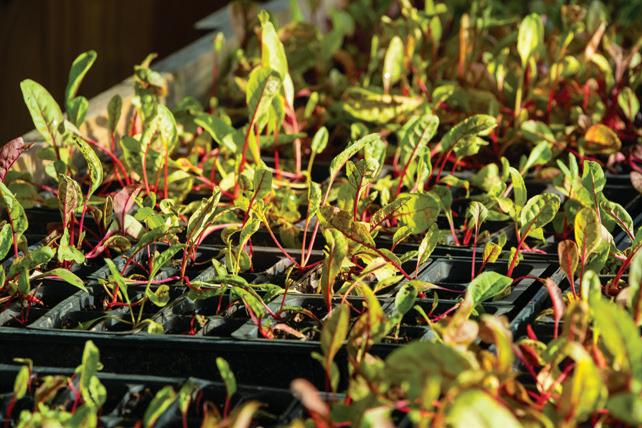

36 | Fresh From Florida FLORIDA’S FARMERS / FAMILY FARMS
PHOTOS: LONG’S PHOTOGRAPHY
Rocky Soil Family Farm offers unique vegetables and herbs, like pink-stemmed celery, left.


FollowFreshFromFlorida.com | 37
biggest challenge. “We need more technology and machinery in order to increase our production,” Chris says.
The Wagners spent more than two years planning before starting the farm. “Making this new life on the farm a reality gives our children the lives we envisioned for them,” Kiona says.

BURGIN FARMS
Caleb Burgin’s grandfather started in the produce industry in 1946. He opened his own brokerage business in 1981, then passed the reins to Caleb’s father. At age 19, Caleb began taking
over the business, convincing his father to actively seek smaller growers rather than buying solely from a few large farms. As a result, today 75% of the “truck veg” Burgin buys as a sales agent is resold to smaller retail customers, with 25% going to bigger retailers such as Walmart and Costco.
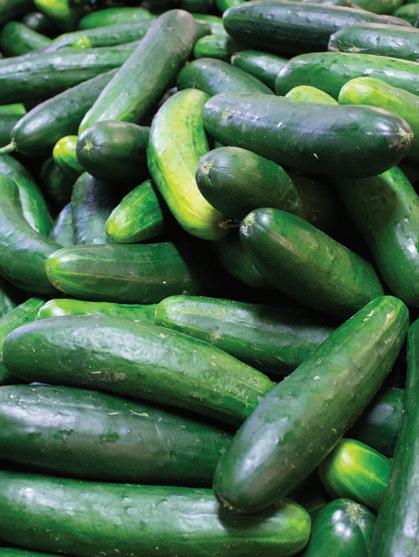
Over the years, Burgin has expanded Burgin Farms with shipping and cooling locations in Plant City and Wauchula. He says most of his growers need a facility to package, cool and load their products.
Burgin himself leases 30 acres for an experimental farm, allowing

him to grow a few small hobby crops like peas and butternut squash, while focusing on representing other Florida growers. Some of the top-selling commodities he brokers for Florida farmers include squash, cucumbers, melons and peppers.
For Burgin, the produce business is a lot like being a trader in the stock market. “The stress and pressure are an adrenaline rush,” he says. “No two days are the same. When you are able to get something to work that shouldn’t work – like a deal or a rush delivery made –it’s invigorating.”

38 | Fresh From Florida
PHOTOS, CLOCKWISE FROM LEFT: BURGIN FARMS; ISTOCK.COM/RALF GEITHE; FLORIDA DEPARTMENT OF AGRICULTURE AND CONSUMER SERVICES
Sasha and Caleb Burgin with their two daughters, Charlotte and Lucy.
ROTH FARMS
In 1948, Ray R. Roth’s first crops in Belle Glade were radishes, leafy vegetables and parsley. Over the years, Ray added other crops, incorporating Roth Farms Inc. in 1962. Today, Roth Farms grows rice, sugar cane, celery, herbs and lettuces, with more than 2,000 acres of leafy vegetables and radishes.
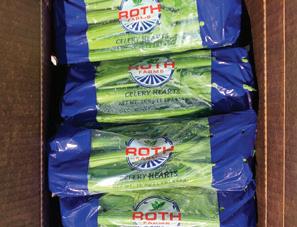
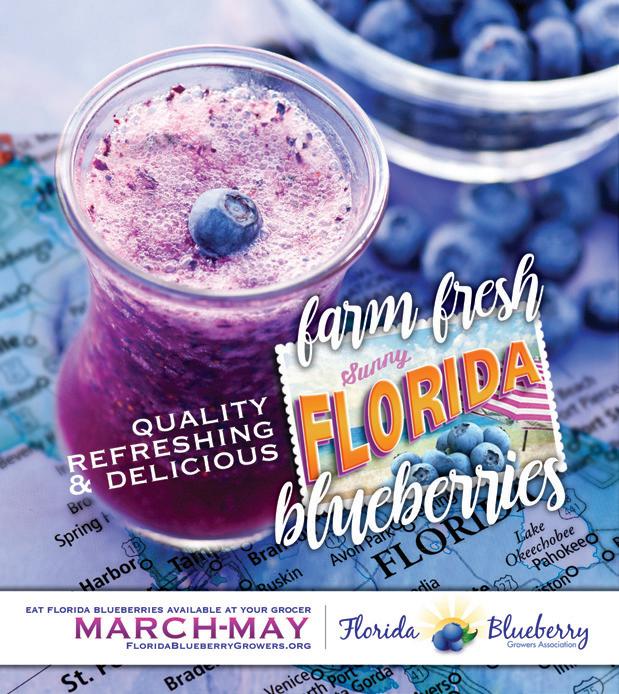
In 2007 Ray’s Heritage, a state-of-the-art packing house named for Ray, opened for grading, processing, cooling and packing produce from Roth Farms and other growers. At the height of the season, Roth Farms employs about 180 domestic and seasonal workers plus about 40 full-time employees year round, says Vice President Ryan Roth, Ray’s grandson.
Although Roth Farms can be classified as a large company, Ryan says they operate from a small, family-farm perspective. “There’s no CFO or a CEO or meetings all the time,” Ryan says. “It’s my dad and me and a farm manager. Management wise, that’s pretty much it.”
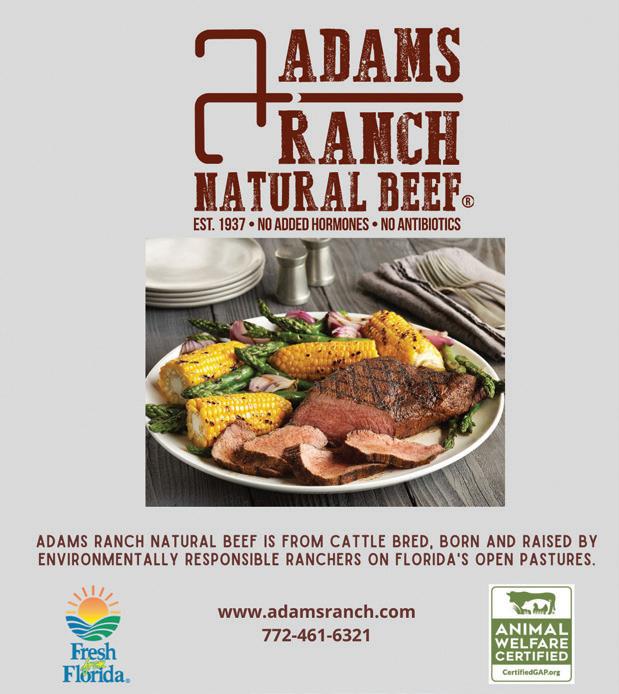
Labor shortages, inflationary pressures and overseeing food safety protocols are challenging, but Ryan says they’ll keep growing the way they have for more than 70 years. “We’re still holding on,” Ryan says. “Agriculture is dynamic. You’ve got to be prepared for change, even the change you can’t predict.”
– Kim Hill
FollowFreshFromFlorida.com | 39
PHOTO: RYAN ROTH/ROTH FARMS
New Markets GROWING
R.C. Hatton Farms finds success in retail cabbage production
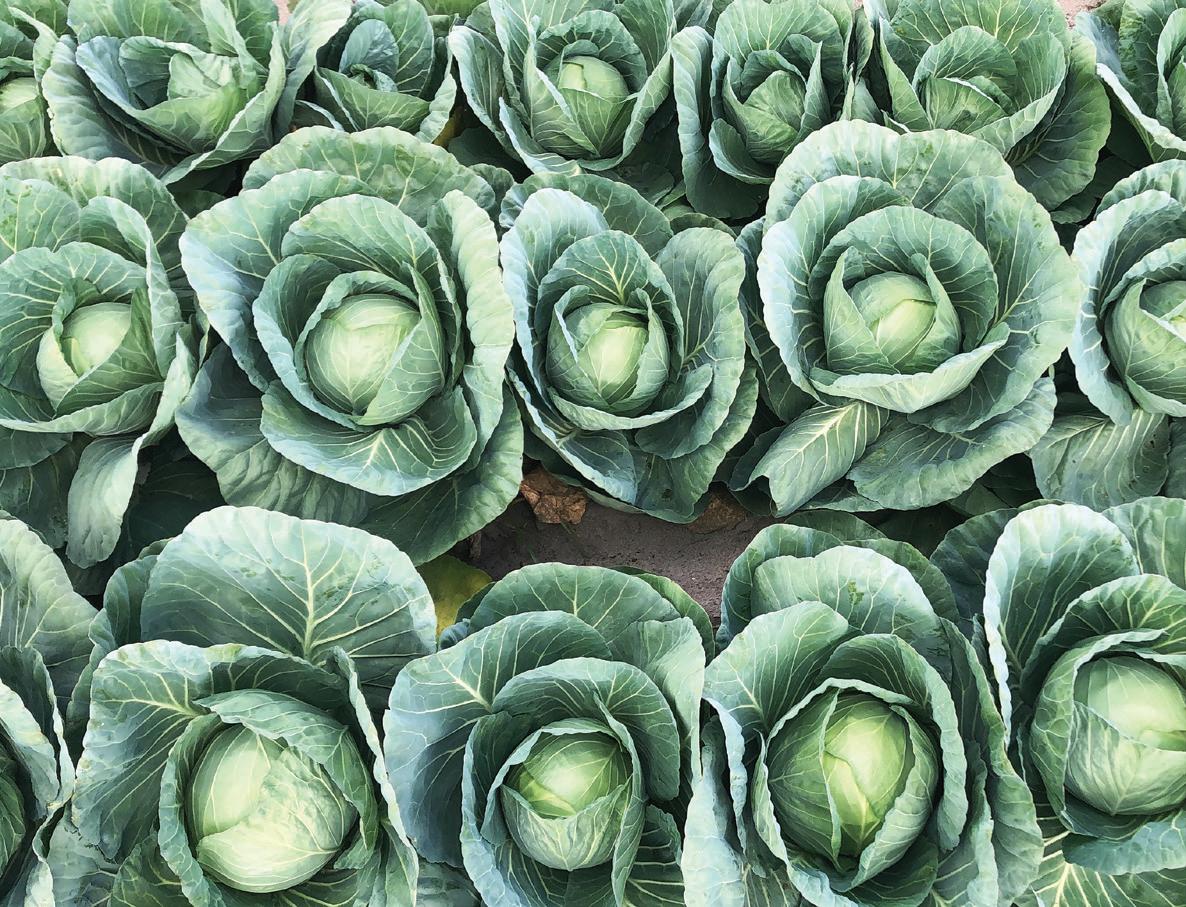
One of the largest produce farms in the Southeast, R.C. Hatton Farms built its farm-totable reputation growing delicious, sweet corn and high-quality green beans. In recent years the farm
added whole head cabbage to its produce menu.
Under the brand name GraceLynne, the retail cabbage is marketed and distributed nationwide by R.C. Hatton Farms’
longtime partner, Hugh Branch Inc., known today as Branch: A Family of Farms. GraceLynne combines the names of two of the granddaughters of R.C. Hatton’s co-owner Paul Allen.
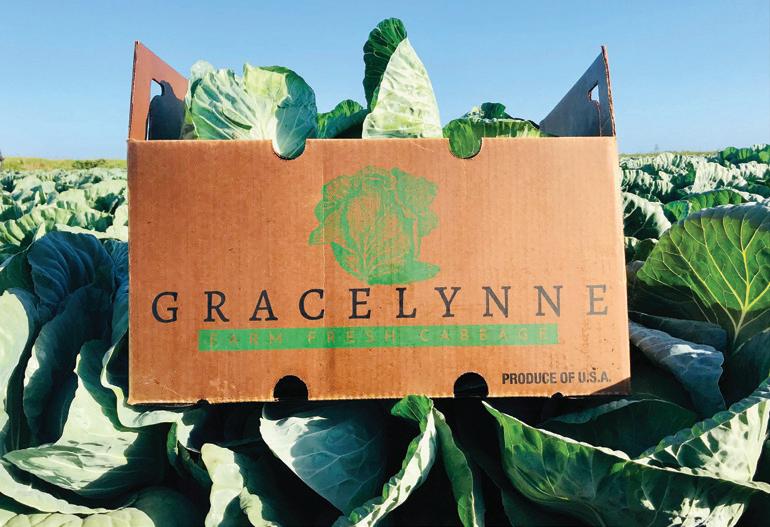
Jonathan Allen, Paul’s son, leads the farm’s cabbage production. “He’s been on the farm all of his life,” Paul says. “He was driving a tractor by the time he was age 12 or 13.”
R.C. Hatton’s entrance into retail cabbage production was welcomed by Hugh Branch Inc., according to Brett Bergman, company president.
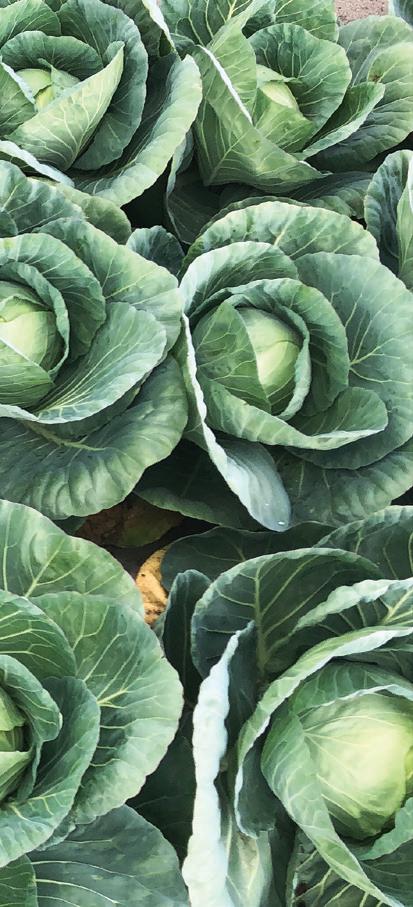
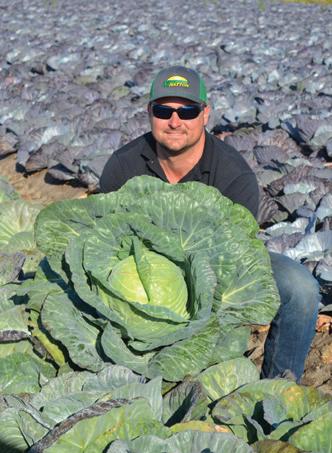
“Cabbage has been a complementary edition to the Branch family of products,” he says. “It’s a great item and allows for
customers to reduce pickups when building out their shipments. Hatton has been a quality producer for Branch for more than 50 years.”
R.C. Hatton has long grown green and red cabbage for use in processing coleslaw. In 2019, the farm increased its acres of cabbage and expanded into the retail market. In fall 2021, thanks to increasing demand for the retail product, R.C. Hatton will plant approximately 900 acres of the crop.
Based in Pahokee, the company grows crops on more than 12,000 acres of land in Florida and Georgia, with its largest farm located on more than 8,000 acres
of fertile land near Lake Okeechobee.
“Our farm has a unique microclimate,” Allen says. “Most of our land is really close to the east side of the lake, within a mile of its shoreline and, in the winter, the land stays warm next to the lake, allowing us to farm throughout the winter.”
The soil near the lake is so nutrient-rich that locals refer to it as “black gold.”
Hatton grows sweet corn and green beans year round, cabbage from December through May, and sugar cane from October through March.
Green beans and cabbage grown by Hatton are marketed about 50/50 to restaurants and supermarkets. Perhaps the company’s best-known product is sweet corn, primarily marketed in tray packs under the Branch: A Family of Farms/Gourmet Extra Sweet brand sold through the Publix Super Markets chain.
R.C. Hatton also has a close relationship with Domino Foods, which buys all Hatton-grown sugar cane for processing. Sugar cane is approximately one-third of R.C. Hatton’s total crop by acreage, approximately 4,500 acres.
SPONSORED BY R.C. HATTON, INC.
Cabbage is the newest product grown by R.C. Hatton, a family-run Florida farm.


42 | Fresh From Florida
Cedar Key Aquaculture Farms has been in the clam business for three decades.
BIG SHELLERS
SHELLFISH CONNOISSEURS ARE DRAWN TO CEDAR KEY CLAMS AND OYSTERS
WITH JUST OVER 1,000 RESIDENTS,
Cedar Key is a small, beloved coastal town with a big reputation.
This charming spot is known as one of the best places in the U.S. for clams and oysters.
More than 90 million clams are produced annually in Cedar Key. This accounts for more than 90% of Florida’s total clam cultivation and makes Cedar Key the largest producer of farm-raised clams in the state.
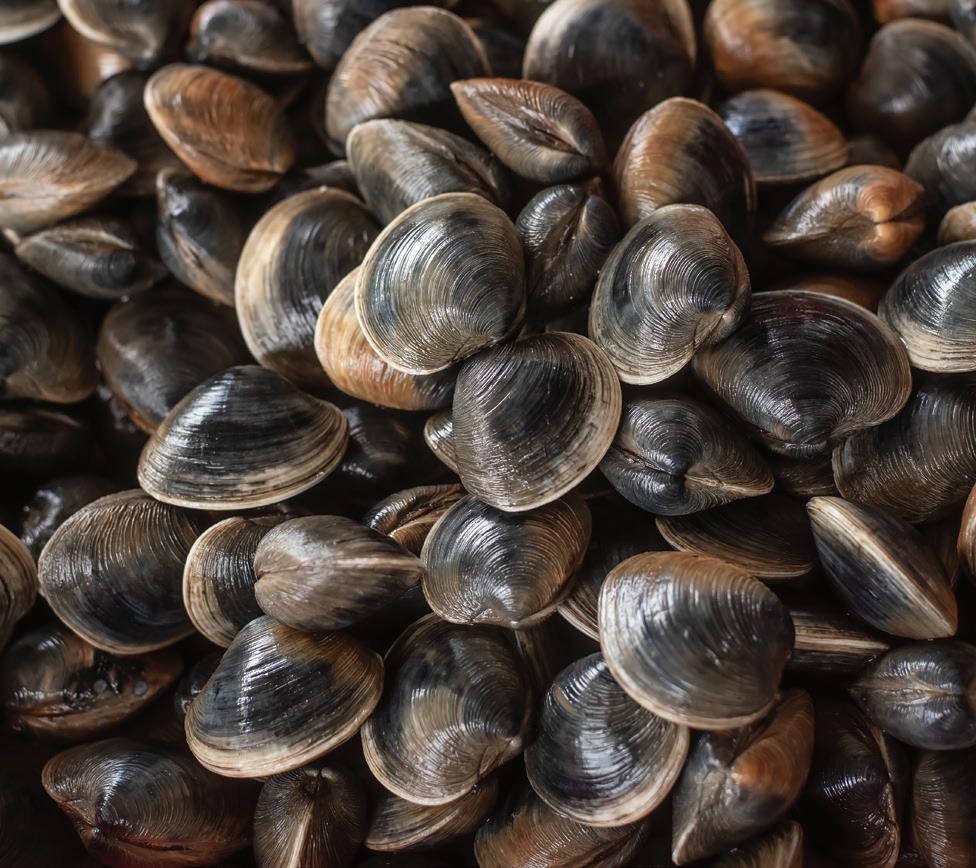
Jon Gill, co-owner of Southern Cross Sea Farms, says they alone ship approximately 20 to 30 million clams annually. Cedar Key is also a top producer of oysters in the state.
“Cedar Key’s location jutting out into the Gulf of Mexico exposes it to a consistent tidal range, with two high tides and two low tides daily that move nutrients constantly through the waters in which the clams are grown,” says Heath Davis of Cedar Key Seafarms. “For these reasons, the time
required to grow market-sized clams is considerably shorter in Cedar Key than other areas.”

Dan Solano, owner of Cedar Key Aquaculture Farms, has been in the clam business for three decades and credits the excellent combination of saltwater and freshwater for the success of the clam farmers and the clams they produce.
“There’s a strong seafood heritage here,” he says. “This area doesn’t have any shoreline development like so much of Florida has, and that allows a good algae production most of the year, which helps them have a great taste and a nice looking ‘piece of meat’ in the shell.”
The clam business took off in Cedar Key around 1990, while oysters have been around much longer but not at the same production level.
Rose Cantwell, chairwoman of the Cedar Key Aquaculture Association Inc. and owner of Dog Island Blues Clam Co., notes hard clams dominate shellfish aquaculture in Florida, and most of the
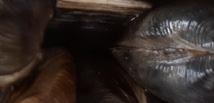
FLORIDA’S FARMERS / SHELLFISH AQUACULTURE PHOTOS: JIMMY HO
FollowFreshFromFlorida.com | 43
production occurs in the Cedar Key area. Other shellfish produced in the state include oysters and sunray venus clams.

IMPROVING WATER QUALITY
Sue Colson, vice mayor of Cedar Key, says because Cedar Key is surrounded by federal and state properties, it helps ensure that the water quality remains natural and safe for shellfish consumption.
As clams feed, they create water currents in and out of their shells, and this helps water quality and contributes to Florida’s marine conservation.
“During this process, they improve the clarity of the water by reducing the turbidity and amount of sediment as they remove excess nutrients from the water,” Davis says. “They are natural filters, and as they convert phytoplankton into clam tissue and shell, they contribute to a wide array of ocean life by allowing more light to penetrate the water column.”
SEED TO TABLE
Cedar Key clam farmers participate in the entire seed-to-table process, which means they grow the tiny baby clams, or seeds, that go from upland or over-water raceway nurseries to grow-out bags on clam leases in the Gulf of Mexico.
“Cedar Key clam farmers utilize best management practices that ensure food safety and quality during the entire process of bringing the consumer clams to their table,” Davis says.
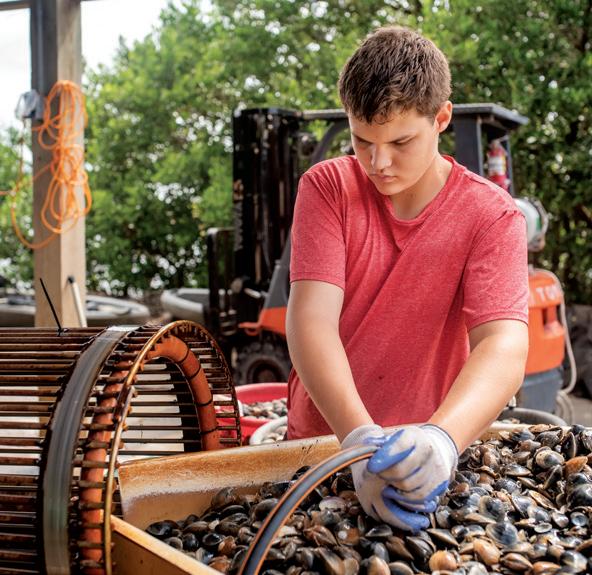
The whole process from seed to table isn’t easy and happens much slower than people think.
“All seeds start in a Florida hatchery then move to a nursery system,” explains Shawn Stephenson, co-owner of Southern Cross Sea Farms. “Nurseries pump large amounts of natural water past the clams and oysters so that they can filter, feed and grow.
Workers harvest clams from their traps, left, before loading them onto their boat and taking the harvest back to the docks. At the docks, the clams are washed and rinsed before sending them down a tumbler that further cleans them, bottom left.
Next, they move out to our underwater fields (leases) and grow out to full size. Clams take two years to grow to marketable size, while oysters take one year.”
CONSUMING CLAMS AND OYSTERS
Many believe the fast-growing, nutrient-rich clams produced in Cedar Key taste better.
There are innumerable recipes for cooking clams. Davis’ favorite is among the simplest – steaming clams in butter, garlic and white wine for seven to nine minutes in a covered pot, or until all the clams open, then eating them on saltine crackers with a little hot sauce or horseradish.

Most Cedar Key restaurants serve clams and oysters, but some of the local favorites include Tony’s Seafood Restaurant, 83 West, the Island Room, Duncan’s on the Gulf and Island Hotel & Restaurant.
“Everyone loves the clams, and we are humbly trying to grow and help the marketplace,” Solano says. “The clams and oysters are grown in the United States, and that gives people around Cedar Key pride.”
– Keith Loria
FIND MORE ONLINE
To find out more about all Cedar Key has to offer, visit the town’s chamber of commerce website: cedarkey.org
44 | Fresh From Florida
PHOTOS, CLOCKWISE FROM TOP: JONATHAN GILL; MICHAEL GOZUM; JIMMY HO
For Florida clam recipes, go to followfreshfromflorida.com/recipes
DIG DEEPER


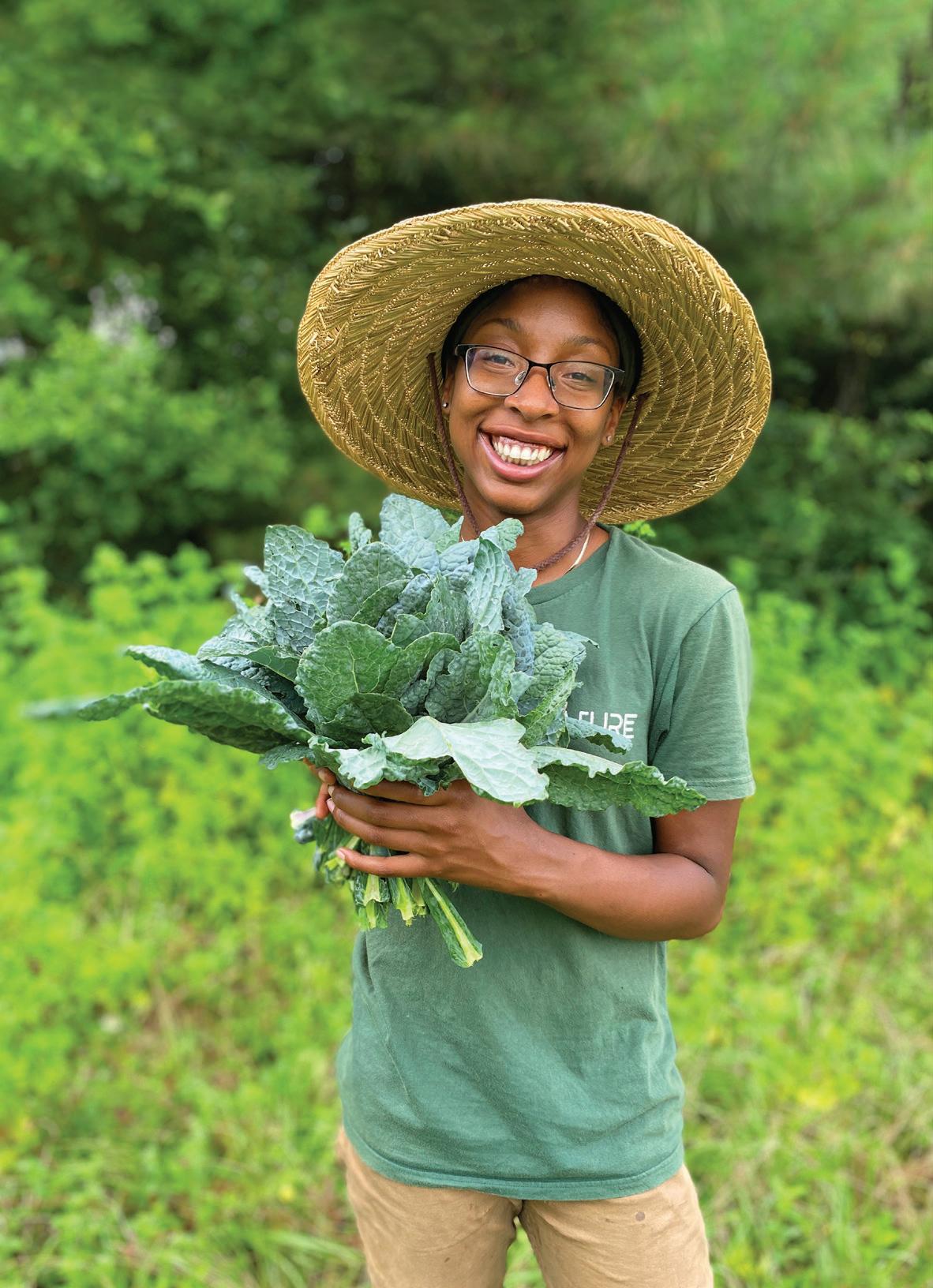
CONSERVATION / HORTICULTURE / INNOVATION / AG EDUCATION
more about FLORIDA AGRICULTURE
BY
Learn
PHOTO: SMARTER
NATURE
An Extraordinary
ENVI RONMENT
CONSERVATION PROVIDES A HOME FOR ENDANGERED SPECIES TO THRIVE
FLORIDA’S DIVERSE ecosystems are host to many endangered species from the Panhandle to the southernmost point. Protecting future generations of unique animals and plants is a primary goal throughout the state.
Here are a few Florida conservation statistics:
Florida has more than a dozen major rivers, which hold manatees, sturgeon and many species of freshwater mussels.
The Florida Panhandle is considered one of the five richest biodiversity hot spots in North America.
Florida has 41 threatened species and 87 endangered species.
One out of every three Floridians relies on the Everglades for their drinking water supply.
The most recent Florida Forest Service Reforestation Survey indicates that more than 63 million trees were planted on over 108,800 acres in Florida in 2018-2019.

46 | Fresh From Florida DIG DEEPER / CONSERVATION
ILLUSTRATION: ISTOCK.COM/LYUBOV TOLSTOVA
Florida supports one of the largest numbers of carnivorous plant species, nearly one-half of the orchid species found in North America and the most fern species in the continental United States.
The Big Bend area, stretching from Cedar Key to Apalachicola, is the largest stretch of undeveloped coastline in the Lower 48 and is filled with state and federally protected parks, refuges and saltwater marshes.
Florida is a national leader in the use of prescribed fire. Prescribed fire is the most valuable tool we have to manage Florida’s fire-dependent and fire-prone landscapes. With a long-term, sustained approach, we can significantly reduce the risk of catastrophic wildfires using prescribed fire. Florida burns protect our communities, wildlife habitat and the health of our forests. To find out more, visit FDACS.gov/ Consumer-Resources/ProtectOur-Environment .
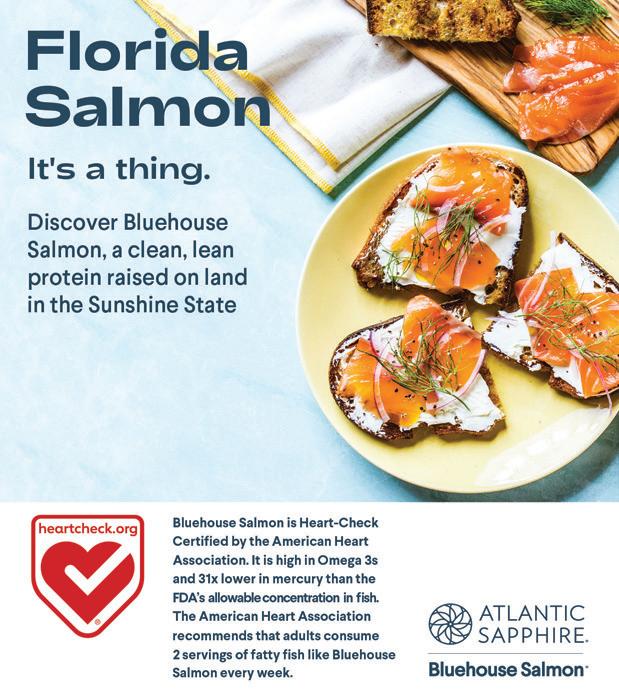
3 THINGS FLORIDA’S FARMERS DO TO CONSERVE WATER
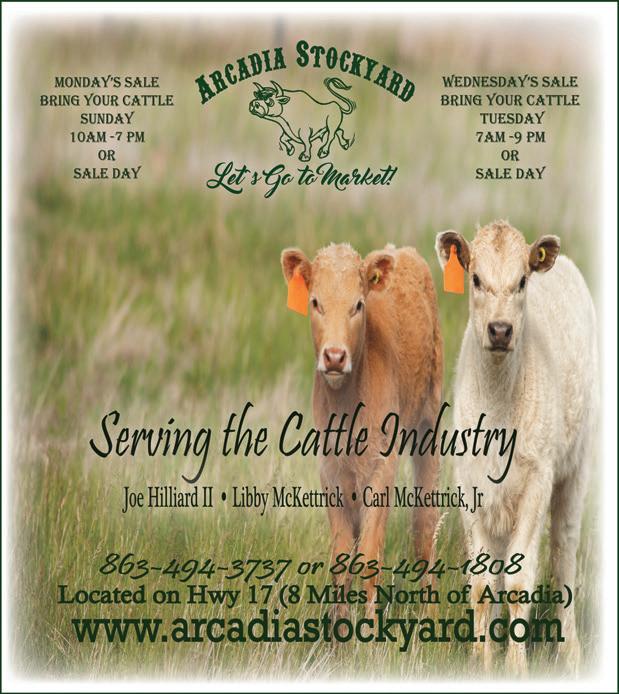
1. Properly installed drip irrigation can save up to 80% more water than conventional irrigation and can even contribute to increased crop yields.
2. Farms utilize conservation tillage and cover crops to increase organic matter in topsoil, which leaves crop residue on a portion of the ground to suppress weeds, increase water absorption and reduce evaporation, erosion and compaction, allowing crops to use water more efficiently.
3. Farms and nurseries increasingly use tailwater recovery ponds to catch stormwater and irrigation runoff to be stored and later used for irrigation of crops.
FollowFreshFromFlorida.com | 47
DIG DEEPER / HORTICULTURE
Roadside Wildflowers
CREATE A BUZZ
MANAGED HABITATS ARE ESSENTIAL FOR BEES, BUTTERFLIES AND OTHER POLLINATORS
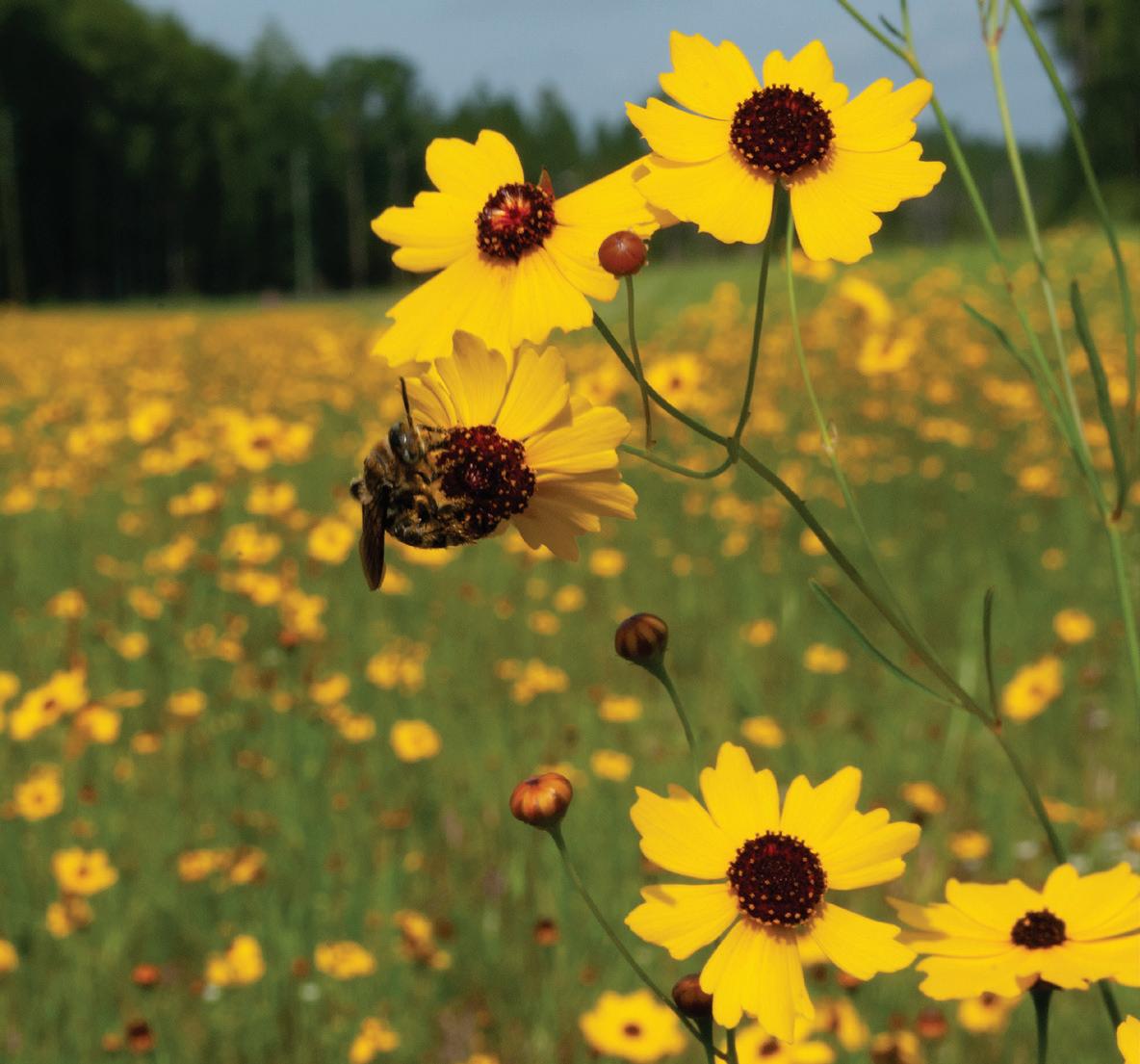
48 | Fresh From Florida
PHOTO: JARET DANIELS, PH.D./FLORIDA MUSEUM OF NATURAL HISTORY
It’s not uncommon to see swaths of colorful wildflowers growing along the roadsides in Florida. The wildflowers offer more than just a pretty view for drivers navigating the highways and byways that crisscross the state. Each roadside flower patch provides important pollinator habitats.
“Traditionally, wildflower plantings were put in place for beautification of roadways,” explains Jaret Daniels, curator of the Florida Museum of Natural History’s McGuire Center for Lepidoptera and Biodiversity. “In recent years, there’s been much more of an understanding that it’s way more than that. It’s also providing many ecosystem benefits.”
DRIVING POLLINATION
The Florida Department of Transportation (FDOT) launched its Wildflower Program in 1963.
Roadsides might not seem like the ideal location for wildflowers. Still, Lisa Roberts, former executive director of the Florida Wildflower Foundation, the nonprofit that partners with FDOT to manage the roadside habitat program, notes that open spaces and full sun allow the colorful blooms to thrive.
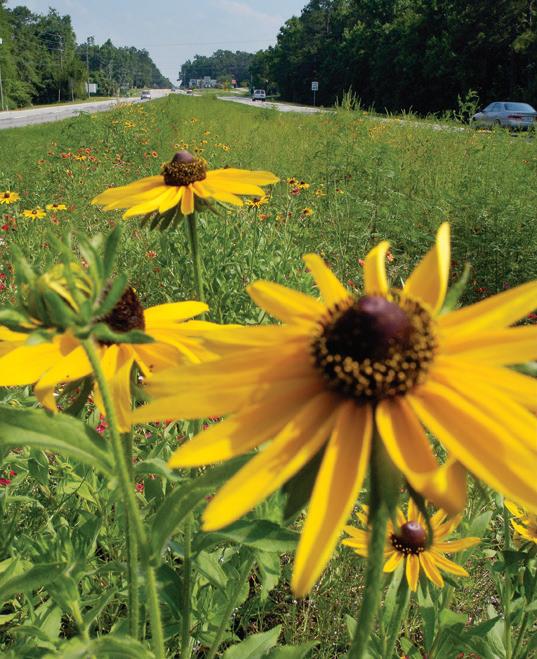
Over time, the focus of the Wildflower Program has changed from planting new stands of wildflowers to altering management practices, including reduced
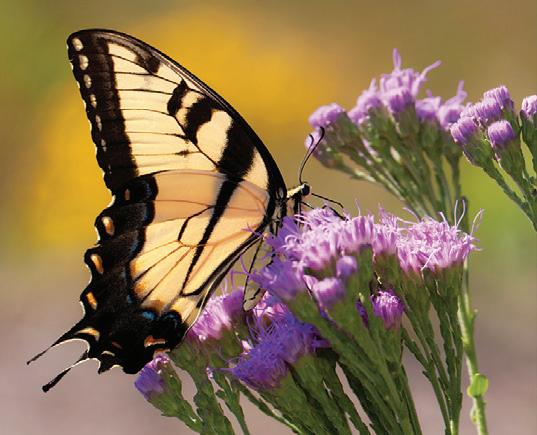
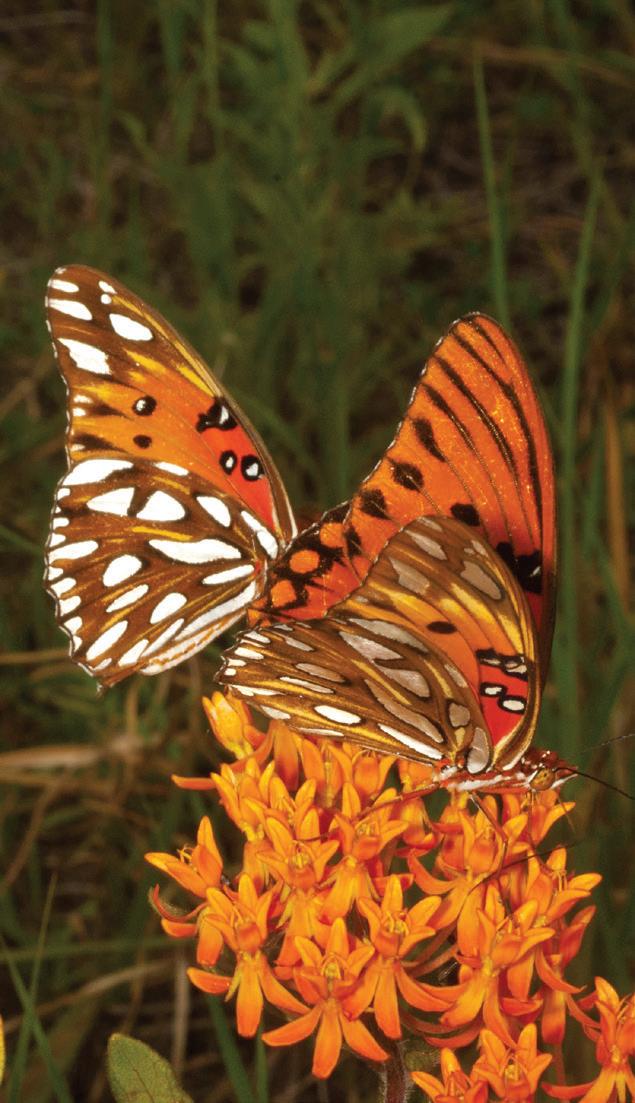
FollowFreshFromFlorida.com | 49
PHOTOS,
AND
CLOCKWISE FROM TOP LEFT: FLORIDA DEPARTMENT OF AGRICULTURE
CONSUMER SERVICES; JARET DANIELS, PH.D./FLORIDA MUSEUM OF NATURAL HISTORY; FLORIDA WILDFLOWER FOUNDATION/JOHN MORAN
Roadside wildflower patches support a diverse amount of pollinators.
mowing. “No mow” signs were installed in wildflower patches to alert FDOT workers that these are managed habitats, not weeds, and serve an essential purpose in the local ecosystem.
Letting wildflowers bloom allows pollinators to take advantage of the pollen, nectar, host plants and nesting sites.
“When we do a management plan for an area and FDOT implements that plan, it’s written into the specifications for that roadside,” Roberts explains. “Depending on the location, a roadside might be mowed just two or three times per year.”
When allowed to flourish, roadside wildflower patches can support a surprising diversity of pollinators from native bumblebees and butterflies to hummingbirds and moths – all species that are declining due to habitat loss. Allowing wildflowers to flourish on roadsides and rights-of-way ensures pollinators and other beneficial insects have access to needed resources.
“How the roadside is mowed and maintained can help support the habitat,” Daniels says. “You don’t have to do much more to enhance biodiversity and key ecosystem services.”
CREATING POLLINATOR PATHWAYS
On its own, each small patch of wildflowers might not seem important, but just like the miles of highway connecting Miami to Jacksonville and Clearwater to Port Saint Lucie, each habitat serves
as a rest stop that supports pollinators on their journeys.
Cherrylake, a sustainable landscaping company based in Groveland, wanted to add to Florida’s patchwork of pollinator habitats.
Mark Russell, leader of sustainability initiatives, oversaw the production of several thousand native Florida wildflowers and added them to the 1,800-acre site, which includes 4.5 miles of roadside suitable for planting pollinator and songbird habitat adjacent to the main road through Groveland.

“There was a three-month period when we were planning the site, and during that time, I saw one butterfly,” he recalls. “Two weeks ago, when we finished phase two of the project…there were pollinators everywhere. The difference was remarkable.”
According to Roberts, many of the roadside wildflower patches are adjacent to agricultural land, which means the habitat supports pollinators and helps farmers.
“That habitat [that adjoins agricultural areas] will attract honeybees, native bees and other insect pollinators, and that can transfer easily into an agricultural field,” she says. “It behooves us to keep that wildflower habitat out there. It’s very important to our native insects.”
– Jodi Helmer
50 | Fresh From Florida
PHOTO: JARET DANIELS, PH.D./FLORIDA MUSEUM OF NATURAL HISTORY; ILLUSTRATION: ISTOCK.COM/ANDREA HILL
Ingenuity and Innovation
Industry leaders recognized for their commitment to the environment
In June 2021, Agriculture Commissioner Nikki Fried and the Florida Department of Agriculture and Consumer Services (FDACS) announced the 2021 AgriculturalEnvironmental Leadership Award winners. The award, presented to farmers and ranchers since 1994, recognizes innovative practices to protect and preserve resources.
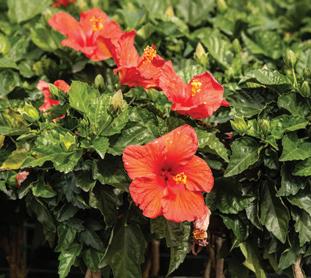
The United States Department of Agriculture notes the impact of climate change on crops, with the state facing a greater risk of increased heat, flooding, drought, wildfires and hurricanes. This makes these contributions all the more impactful.
“Every acre of farmland is an opportunity, and together we can preserve our precious natural resources for generations to come,” Commissioner Fried says.
Nominations are reviewed by a committee of representatives from several organizations, including FDACS, The Nature Conservancy, Water Management Districts, Florida Farm Bureau, Florida Cattlemen’s Association, Dairy Council of Florida and others.
Florida is home to over
47,500 farms over 9.7 million acres.
The average size of a farm in Florida was 204 acres in 2019.
Source: Florida Department of Agriculture and Consumer Services
SANDY STEIN, THE JUNGLE NURSERY
Sandy Stein was chosen as a winner because of his innovative program to use insects to combat pests rather than chemical treatments. Open since 1981, the 25-acre foliage nursery in Homestead was founded by Stein and his wife, Robin. They proudly provide pest-free plants to clients in all 50 states and have made it their mission to spread plant fever. After a 5 1/2-year hiatus following the destruction of Hurricane Andrew, the Steins reopened and expanded their nursery to include interior foliage, spring color, landscape plants, palms and cycads.
practices, which promote soil and tree health, reduce the need for fertilizer and insecticides, and increase water retention. For a century, the Turner family has grown, harvested, packed and shipped citrus in eastern Hillsborough County. More recently, Turner purchased land to trial and research regenerative growing techniques. As a result, none of their fruits are de-greened or have color added, nor do they use insecticides or fungicides.
BRAD TURNER, TURNER FAMILY GROVES
Brad Turner was recognized for his regenerative management

ERIC HJORT, TATER FARMS
Eric Hjort, the president and general manager of Tater Farms in Hastings, was chosen for adopting practices that reduce water use by about 50% across 1,500 acres, as well as protecting water quality. The family-owned farm got its start in the 1970s by Polly and the late Frank Johns harvesting potatoes and cabbage. In 2004, the family shifted to turfgrass and now grows more than 4,000 acres of St. Augustine, Bahia, Bermuda and zoysia grasses. Their latest venture is citrus production, which they hope to harvest soon.
 – Christiana Lilly
– Christiana Lilly
FollowFreshFromFlorida.com | 51
DIG DEEPER / INNOVATION
PHOTOS, FROM TOP: FRANK ORDOÑEZ; TATER FARMS; BRAD TURNER
Adams Ranch Inc. adamsranch.com
Arcadia Stockyard arcadiastockyard.com
Atlantic Sapphire atlanticsapphire.com
Duda & Sons, Inc. duda.com
Everglades Equipment Group evergladesequipmentgroup.com
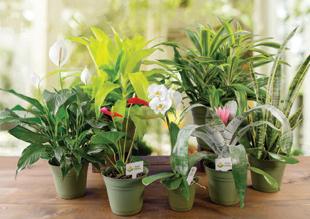
Florida 4-H Foundation florida4h.ifas.ufl.edu
Florida Ag in the Classroom agtag.org
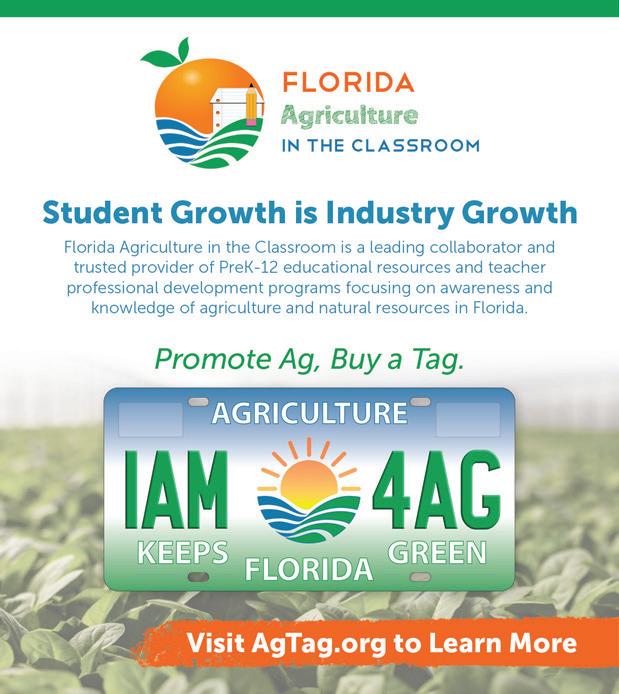
Florida Agritourism Association visitfloridafarms.com
Florida Blueberry Growers Association floridablueberrygrowers.org
Florida Citrus Mutual flcitrusmutual.com
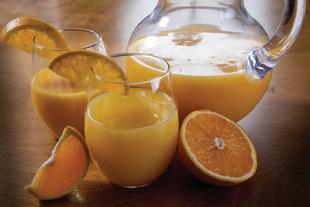
Florida Dairy Farmers floridamilk.com
Florida Department of Agriculture and Consumer Services followfreshfromflorida.com


Florida Farm Bureau floridafarmbureau.org
Florida State Fair floridastatefair.com
Florida Tomato Committee floridatomatoes.org
Florida Watermelon Association flfwa.com
Fullei Fresh fulleifresh.com
Port Tampa Bay porttb.com
R.C. Hatton, Inc. rchatton.com
Reed’s Metals of Horseshoe Bend reedsmetals.com
Southern United States Trade Association susta.org

Sunshine Sweet Corn Farmers of Florida sunshinesweetcorn.com
TKM Bengard Farms, LLC tkmfarms.com
University of Florida/IFAS Extension ifas.ufl.edu
52 | Fresh From Florida
LEARN MORE ABOUT THE ORGANIZATIONS THAT SUPPORT FLORIDA AGRICULTURE. Visit Our Advertisers What does it take to export your Florida agricultural products? Visit susta.org or call (850) 617-7333 The Southern U.S. Trade Association and Florida Department of Agriculture and Consumer Services offer all of this and more! Meet Foreign Buyers Trade Missions Trade Shows In-Store Promotions Do the Research Webinars Export Helpline Export Readiness Training USDA Resources Promote Your Brand International Promotions are 50% Reimbursable Export Education 50% CostShare Global Events
To FFA and BEYOND


Florida FFA helps prepare students for bright futures




within FFA to date: 2020-21 Florida FFA state president.
Agricultural education is a natural gateway to a career in Florida’s thriving agriculture industry, and thanks to FFA (formerly known as Future Farmers of America), agricultural education is more accessible than ever to students.
Representing FFA at the state level, the Florida FFA Association serves nearly 30,000 middle and high school students from more than 300 local FFA chapters. FFA’s three-pronged approach, which includes classroom instruction, supervised agricultural experience and life skills, helps prepare members to take on careers in business, communications, marketing, forestry, science, horticulture and natural resources.

COMPETITIONS LEAD TO OPPORTUNITY
The organization also gives members opportunities to compete in career and leadership development events that put their critical thinking and teamwork skills to the test with events like agricultural sales, livestock evaluation and parliamentary procedure.
For Riley Rowe, a former member of the Belleview High School Sr. FFA in Marion County, those kinds of events helped propel her into her most exciting role
“I grew up on a cattle ranch, so my background is in production agriculture, but I knew I wanted to explore additional parts of ag during my time in FFA,” says Rowe, who also served as the Florida FFA’s District V president in 2018-19. “Because of that, I made sure to compete in a variety of Career and Leadership Development Events, including Prepared Public Speaking, Extemporaneous Public Speaking, Food Science and Nursery Landscape Management. Those contests helped mold me and gave me the confidence to pursue leadership roles within my chapter and beyond.”
Rowe plans to earn an associate degree at Santa Fe College in Gainesville before transferring to the University of Florida to work toward a bachelor’s degree in agricultural education and communication with a specialization in communication and leadership development. After graduation, her goal is to work in public relations for an agriculture company.
“FFA is a very comprehensive program with so many opportunities that combine agriculture and leadership, and there’s just nothing else quite like it,” Rowe says. “It’s a student-led organization that can do so much for you, even if you don’t want to work
in agriculture. You can improve your communication skills, grow as a leader and develop long-lasting relationships – just by joining FFA and participating in the events that appeal to you.”
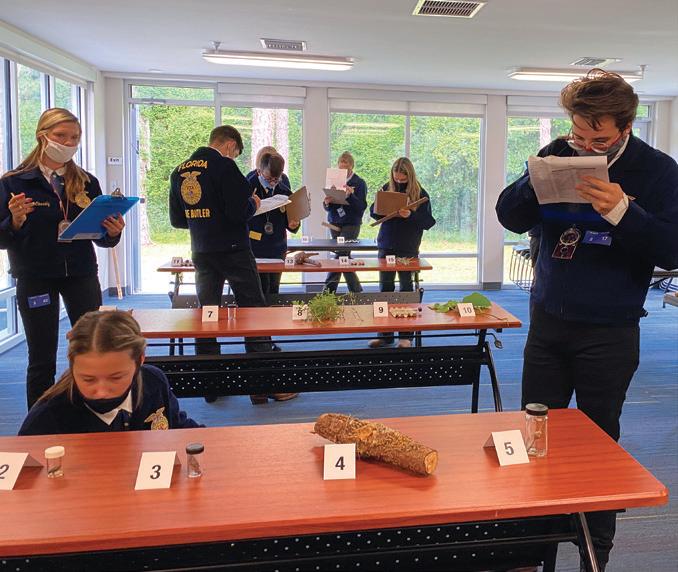 – Jessica Walker Boehm
– Jessica Walker Boehm
START A CHAPTER
Ready to begin your FFA journey but don’t have a chapter at your school? Head to flaffa.org/ starting-a-ffa-chapter to find out how to start an agricultural education program and charter an FFA chapter.
FollowFreshFromFlorida.com | 53
DIG DEEPER / AG EDUCATION
PHOTO: RILEY ROWE
Florida FFA members compete in the 2021 State FFA Forestry Contest.
SOIL, SEED, SOUL
IMPROVING DIVERSITY IN FLORIDA AGRICULTURE
THERE ARE NEARLY 900 million acres of land in the United States used in agricultural activities. However, only 5% of all farm owners are Black, Indigenous, and other people of color (BIPOC).
Diversity and inclusion, fundamental principles of sustainable agronomic communities, are necessary to the advancement of the agricultural industry in the U.S.

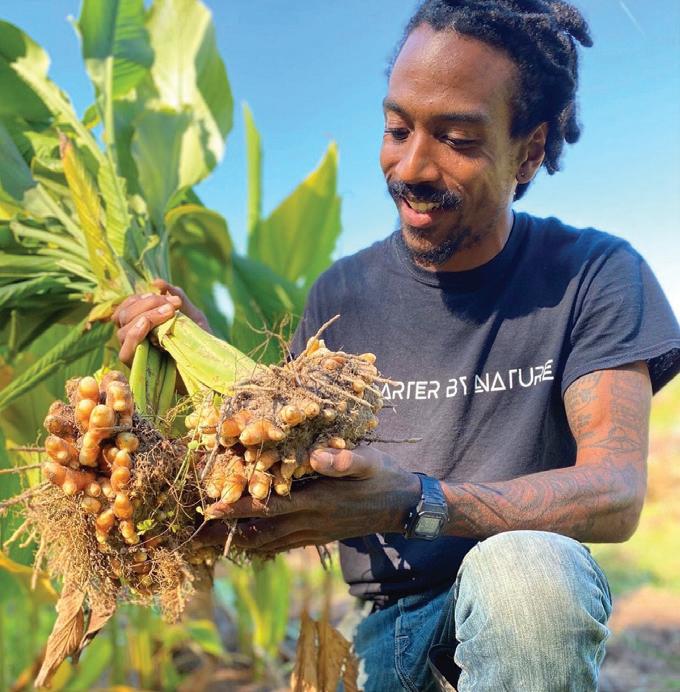
“Systematic discrimination has had a role in our nation’s agricultural system determining who owns, accesses and benefits from farmland, wealth and other resources,” says Florida Commissioner of Agriculture Nikki Fried.
Latresia Wilson, Ph.D., of the Florida Black Farmers and Agriculturalists Association documents and facilitates the dissemination of information to struggling farmers of color. “Historically, farmers of color experience land loss and business failures at disproportionate numbers,” Wilson says.
The United States Department of Agriculture reports that the proportion of African American farmers in the U.S. has shrunk from 14% in 1920 to just under 2% in 2017. Additionally, fewer than 3% of farmers are Native American, about 4% are Hispanic, and 1% are Asian AmericanPacific Islander. The Land Loss and Reparations Project states that African American farmers have lost nearly 90% of their land in the last century, amounting to a $250 billion to $350 billion loss of accumulated wealth and income.
CHANGING THE STATS
In a recent vote, the National Association of State Departments of Agriculture amended the association’s guiding principles to include a new diversity,
54 | Fresh From Florida
DIG
AG
DEEPER /
EDUCATION
PHOTO: SMARTER BY NATURE
David “Kip” Ritchey of Smarter by Nature Farms in Quincy harvests ginger.
inclusion and racial equity policy to address the lack of equality within agriculture.

In Florida, Angelique Taylor and David “Kip” Ritchey of Smarter by Nature Farms are working to change the landscape and the statistical numbers in farming. Since 2017, Taylor and Ritchey have managed a 5-acre plot of land in Quincy situated on what was once a thriving farm 20 years ago. Through their use of regenerative agriculture, permaculture and other sustainable methods, they furnish more than 100 families per year with fresh, organic produce and aim to provide healthy, affordable food. In addition, Taylor and Ritchey share food-growing knowledge and earth stewardship with members
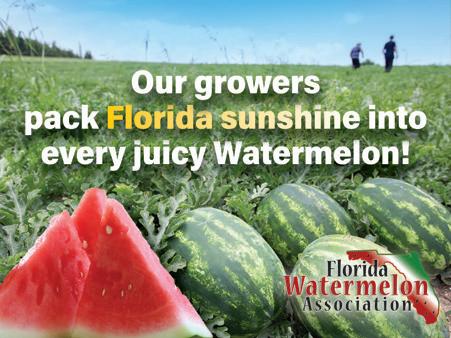
of the community. They are on a mission to facilitate sustainable relationships between people and the natural environment.



“Our goal is to increase soil fertility, grow healthy plants without the use of synthetic fertilizers and excessive tilling of the land, and give the community power in knowing how to feed and sustain itself,” Taylor says.

Continued ecological health, economic survival and community strength can only be fortified and sustained by diversity. America is a melting pot of many cultures. Its diversity of crops is a direct reflection of the diversity of people calling “the land of the free” home.
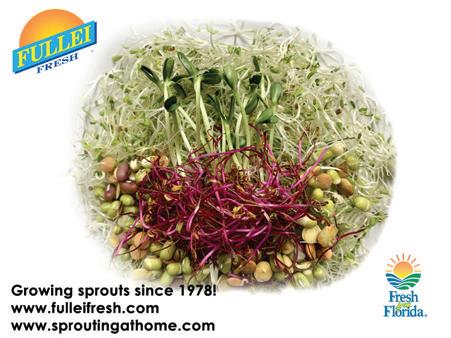
FollowFreshFromFlorida.com | 55
– Yolanda J. Ash
Our goal is to increase soil fertility, grow healthy plants without the use of synthetic fertilizers and excessive tilling of the land, and give the community power in knowing how to feed and sustain itself,”
Read the • OPTIMIZED FOR ONLINE • SHARE THE CONTENT • EMBED IN YOUR SITE DIGITAL MAGAZINE
ANGELIQUE TAYLOR, farmer
Meet the Agronauts
Plant pioneers push exploration boundaries
As recent news featured revolutionary trips into space, two Ph.D. plant molecular biologists were making their own galactic headlines. Their pioneering work may ultimately hold the key to traveling and living beyond Earth for long periods of time.
Anna-Lisa Paul, University of Florida Institute of Food and Agricultural Sciences professor and co-principal investigator of the university’s Space Plants Lab, and Rob Ferl, distinguished professor and principal investigator of the same, are evaluating how plants respond and adapt to spaceflight and the zero-gravity environment.
“Our purpose is to take plants off our planet and understand the impact of the novel environment of spaceflight on them to help enable greater deep-space exploration,” Paul says. “Gene expression informs how plants adapt. That knowledge will
allow us to be residents, not just visitors, to space in the future.”

BLOOMING IN SPACE
Paul and Ferl are working with the flowering weed Arabidopsis thaliana , which has been genetically engineered to display its adaptation response to stress. The duo says the species is considered “the white mouse of the plant world.”
“Environmental changes almost always lead to changes in gene regulation. We send these plants to the International Space Station where astronauts can take macroscopic and microscope images of them as they grow, while our lab on Earth monitors the experiments,” Ferl explains. “The plants are fixed in a solution that preserves their on-orbit metabolic state so once they return to Earth, we can perform a variety of tests and determine how the plants responded to time in space.”
Working with NASA, the researchers first sent plants on the Space Shuttle Columbia in 1999 and have since launched 10 spaceflight experiments to the International Space Station. More recently, they flew plants on the 2018 and 2021 Virgin Galactic flights and two flights with Blue Origin. The latest plant experiment on the Virgin Galactic flight represented the first human-tended experiment in suborbital space.
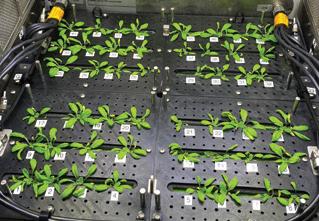

In addition to studying how food might be grown in space, the research offers insight into food production challenges on Earth. Paul says by having a greenhouse on the moon or Mars, scientists will see how a novel, hostile environment there might help farmers address stressors on Earth, such as global warming or pollution, and determine how to make adaptations to better sustain food production.
“Our work paves the way for plants to be grown in habitats that allow us to remain in space. I may not be here to see a greenhouse on Mars, but I like to think the work we are doing today lays the foundation for that future success,” Paul says.
– Barb Baylor Anderson

56 | Fresh From Florida DIG DEEPER / INNOVATION
PHOTOS, FROM LEFT: NASA; NASA-KSC
Left: Astronaut Jeff Williams harvests Arabidopsis plants on the International Space Station. Above: Arabidopsis plants grow in the Advanced Plant Habitat.
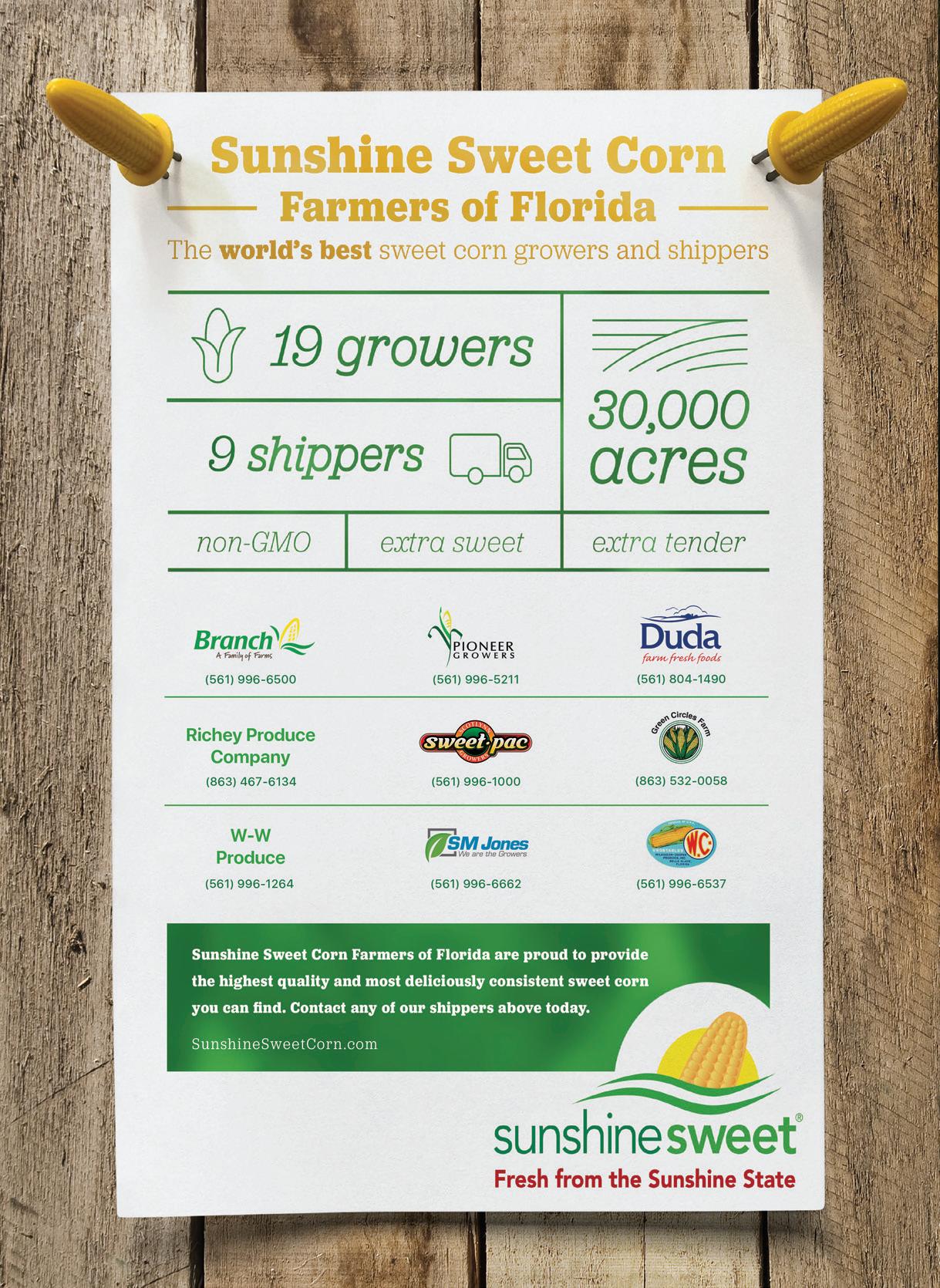

FRESH FROM FLORIDA | 2022 EDITION | VOLUME 8


























































































































 – Kim Hill
PHOTOS: FLORIDA STATE FAIRGROUNDS; COW: ISTOCK.COM/HUEPHOTOGRAPHY; SHRIMP: ISTOCK.COM/XSANDRA
– Kim Hill
PHOTOS: FLORIDA STATE FAIRGROUNDS; COW: ISTOCK.COM/HUEPHOTOGRAPHY; SHRIMP: ISTOCK.COM/XSANDRA






















































































 – Christiana Lilly
– Christiana Lilly








 – Jessica Walker Boehm
– Jessica Walker Boehm














